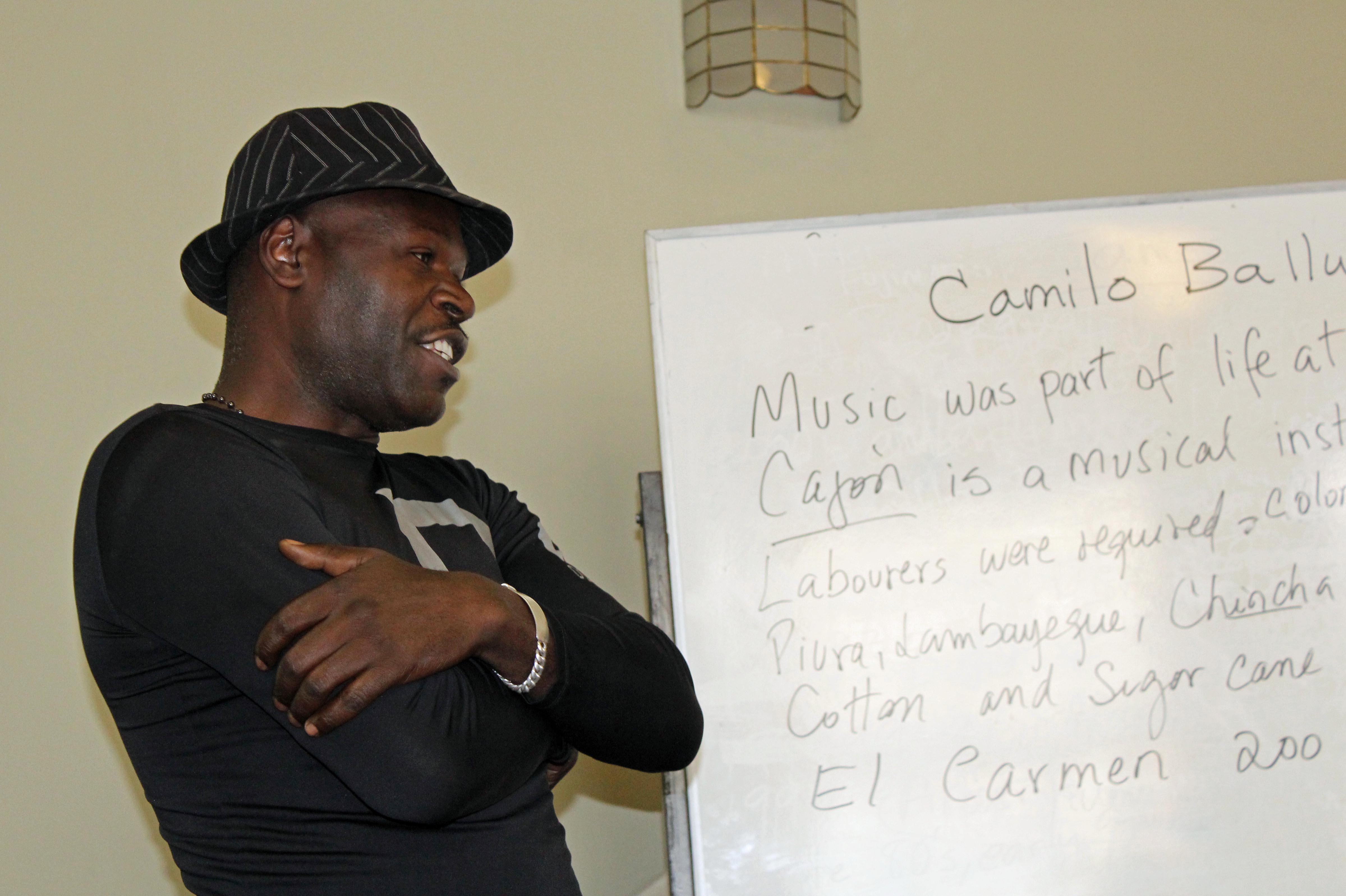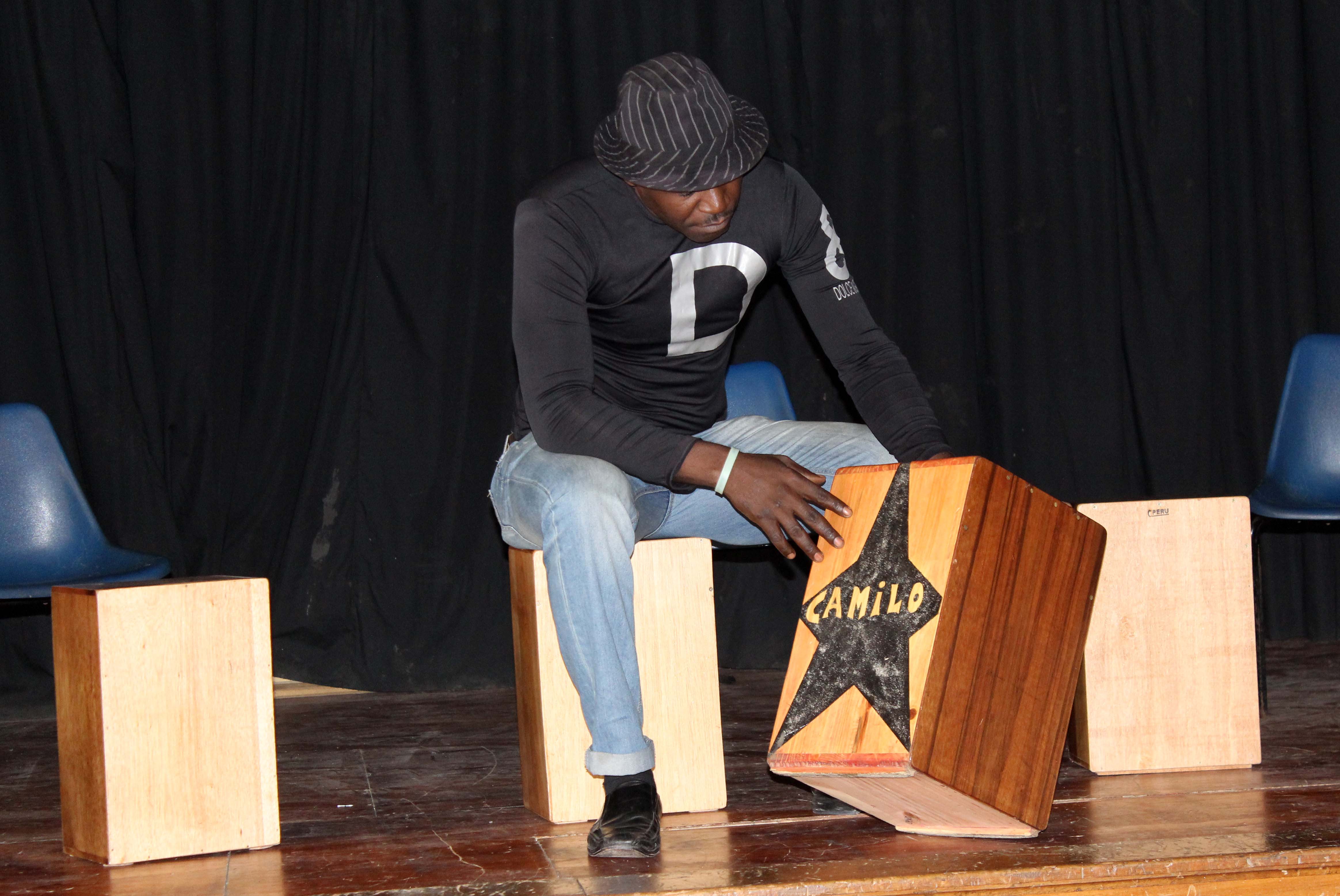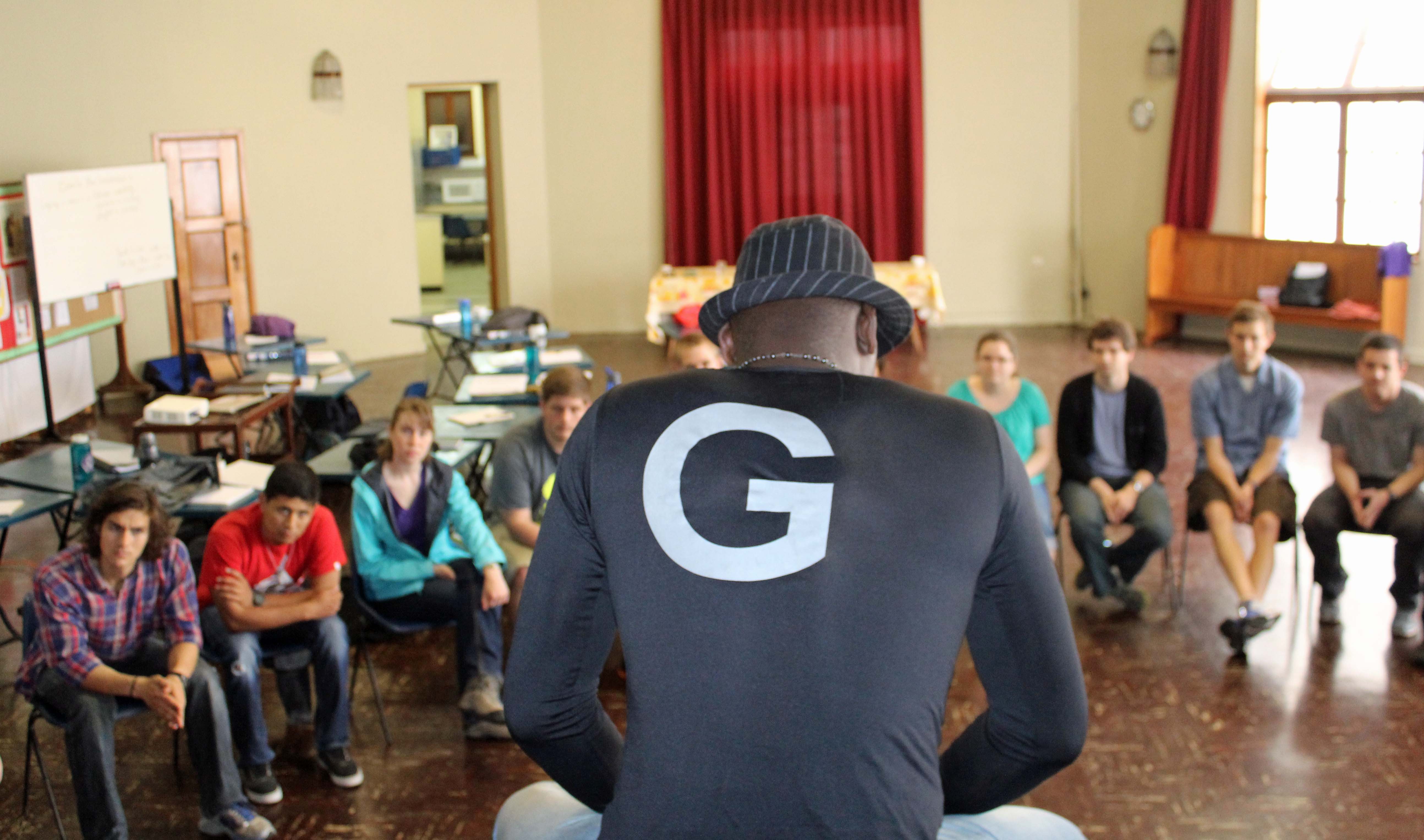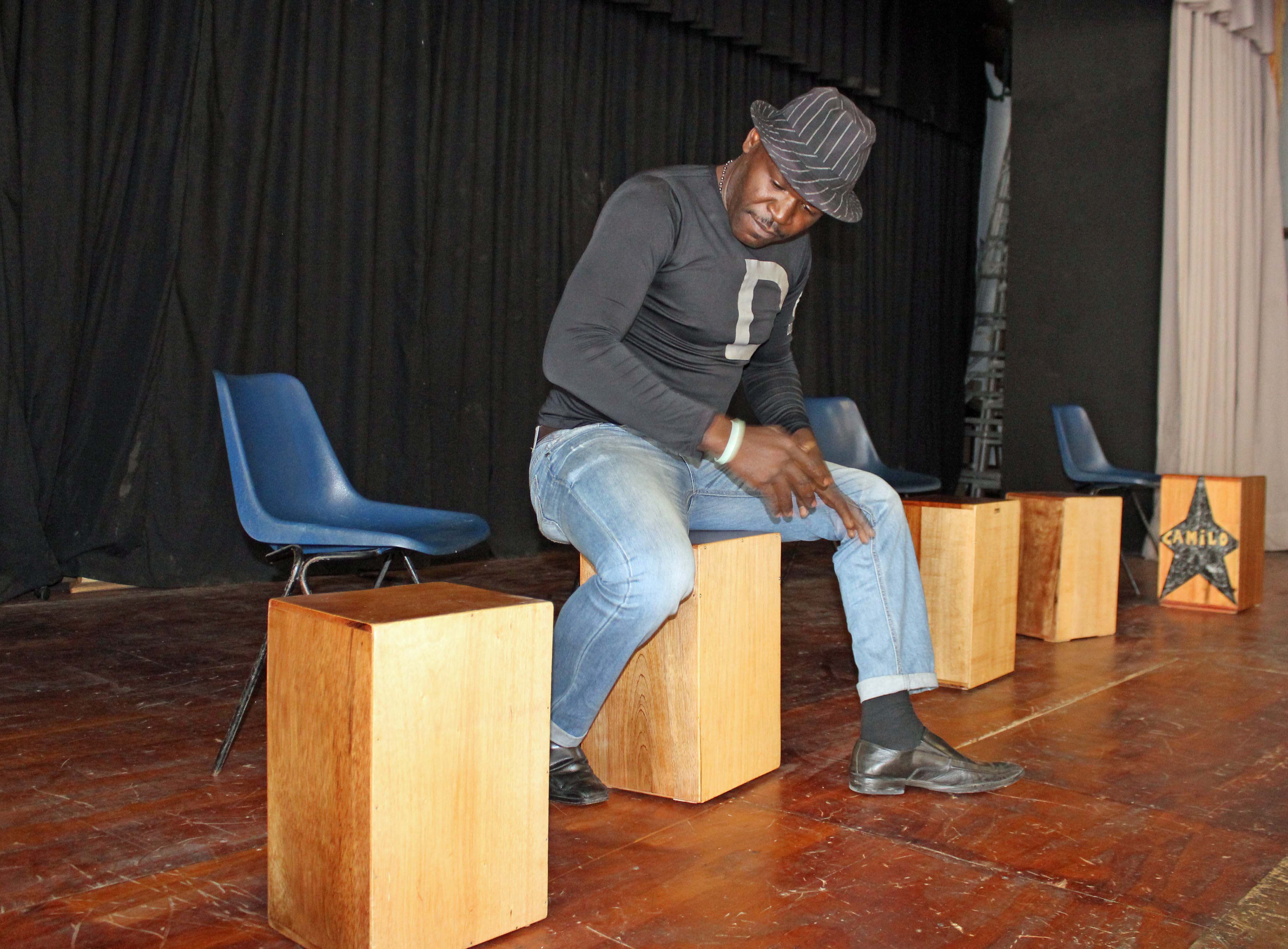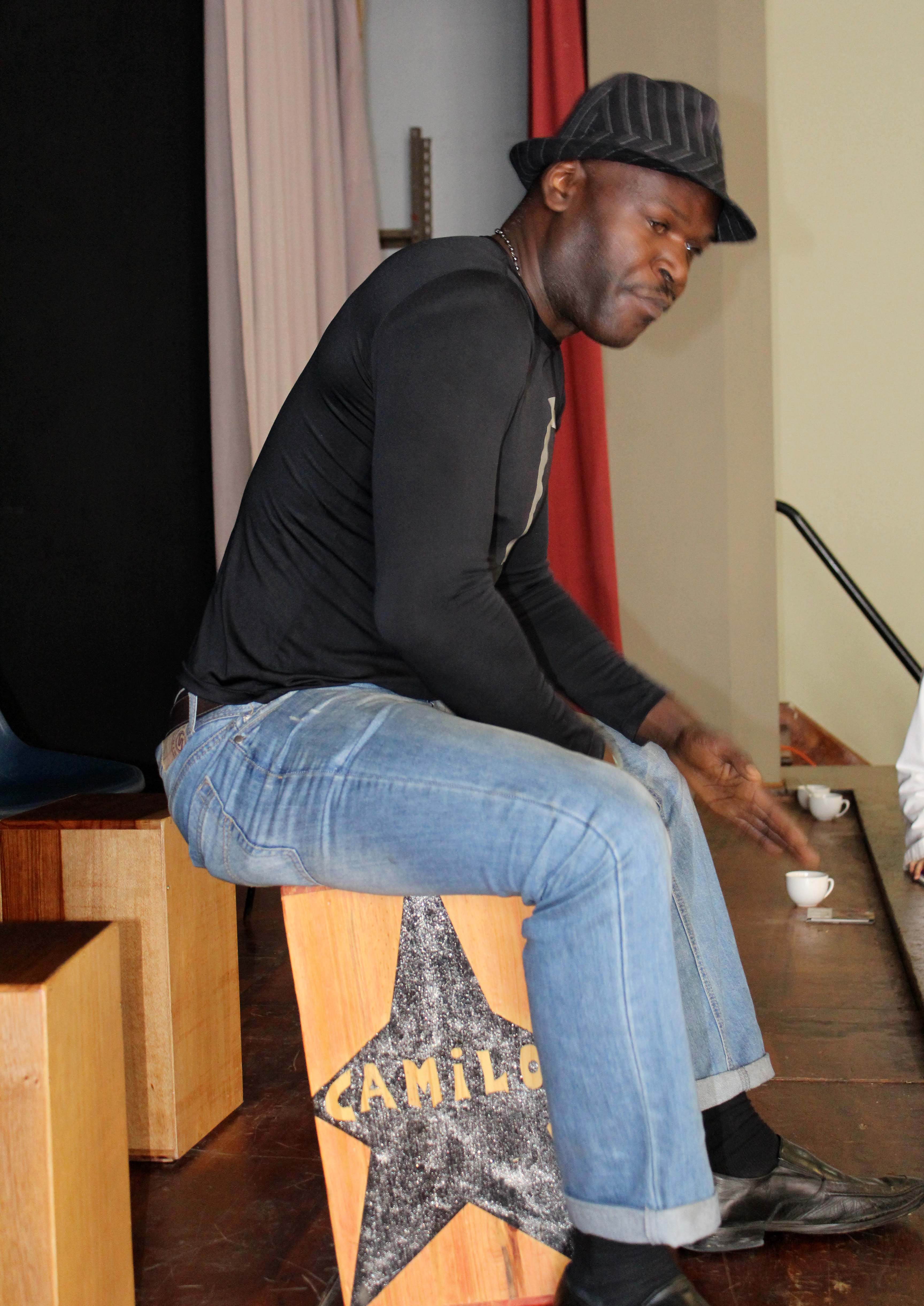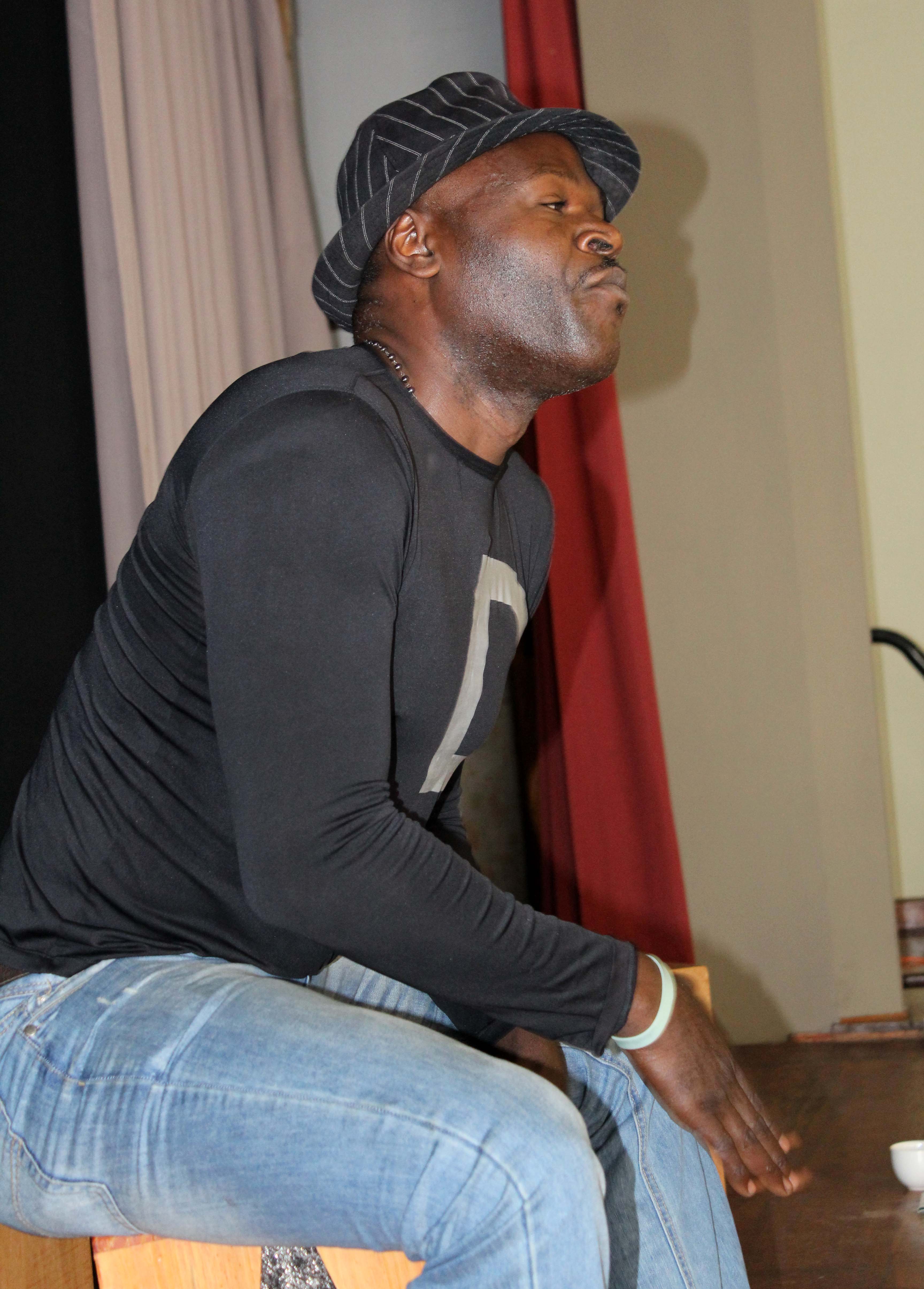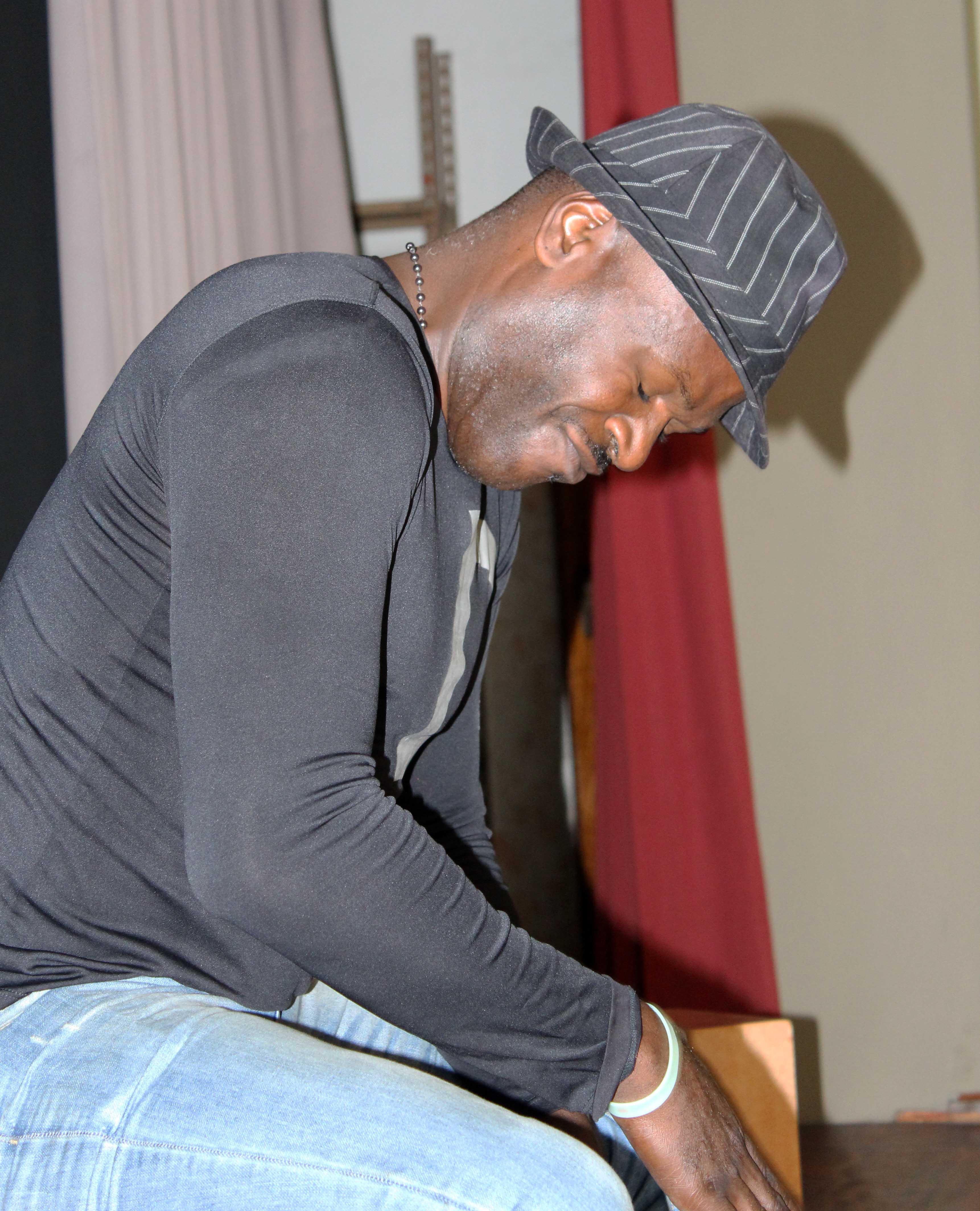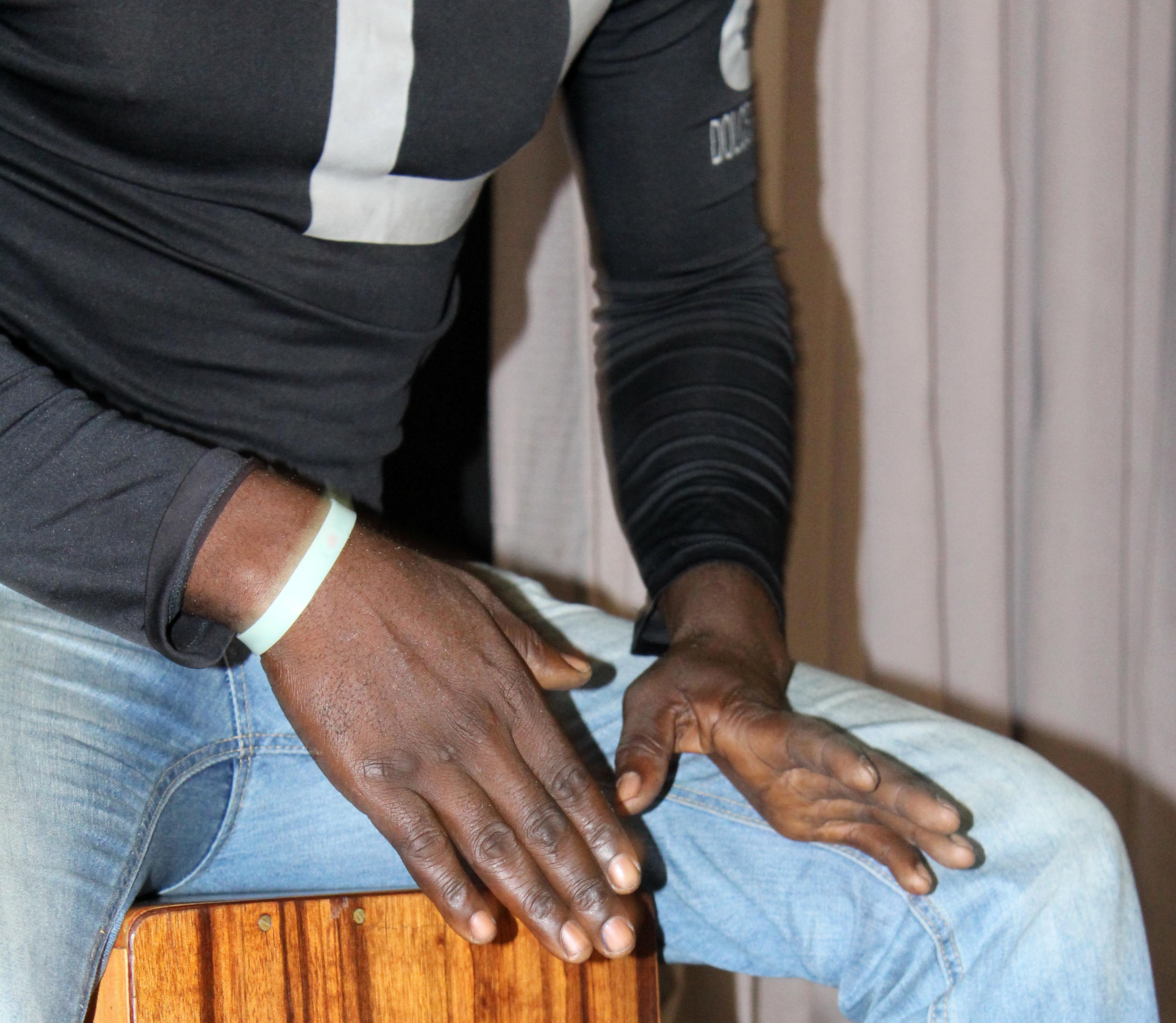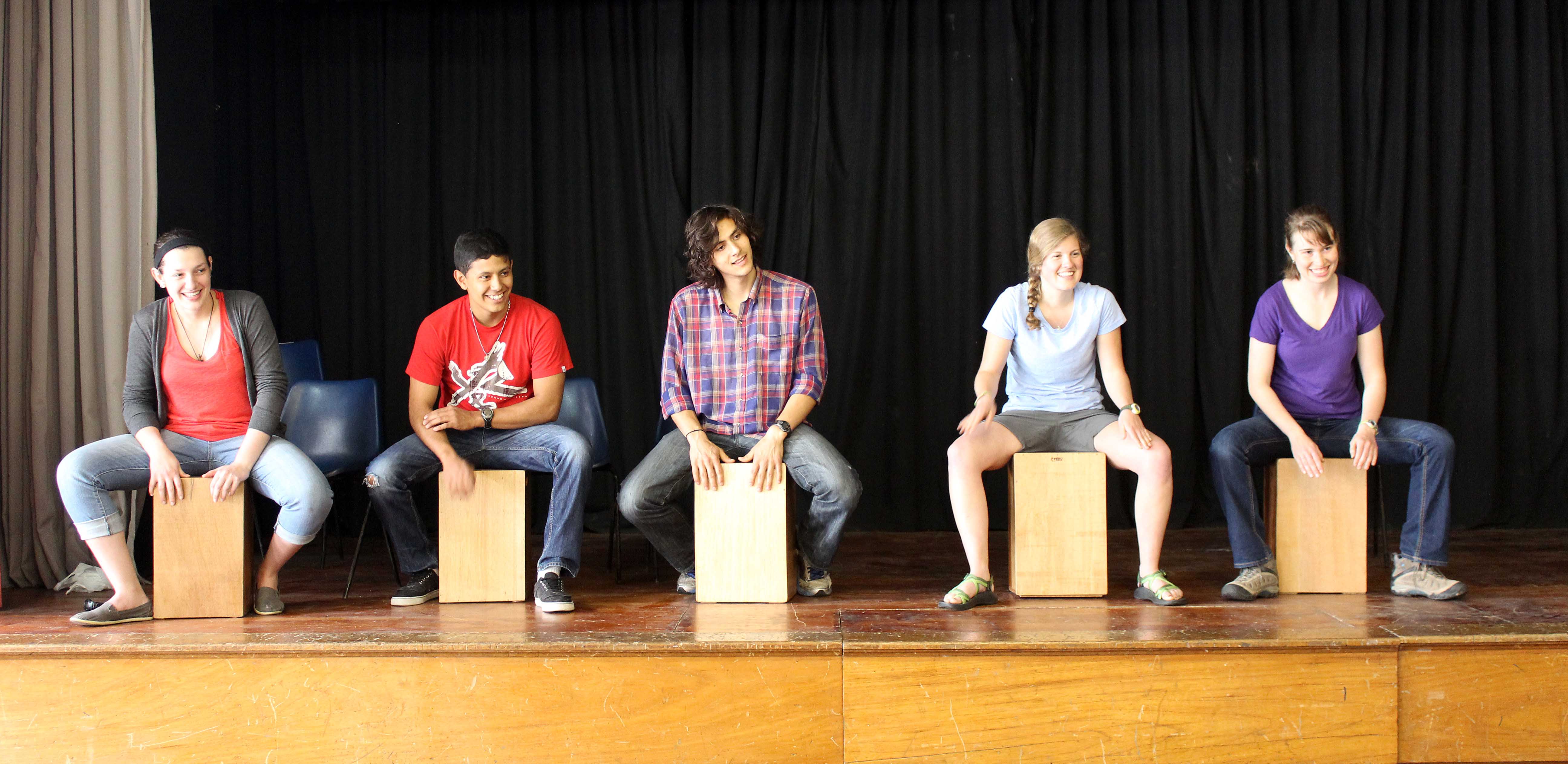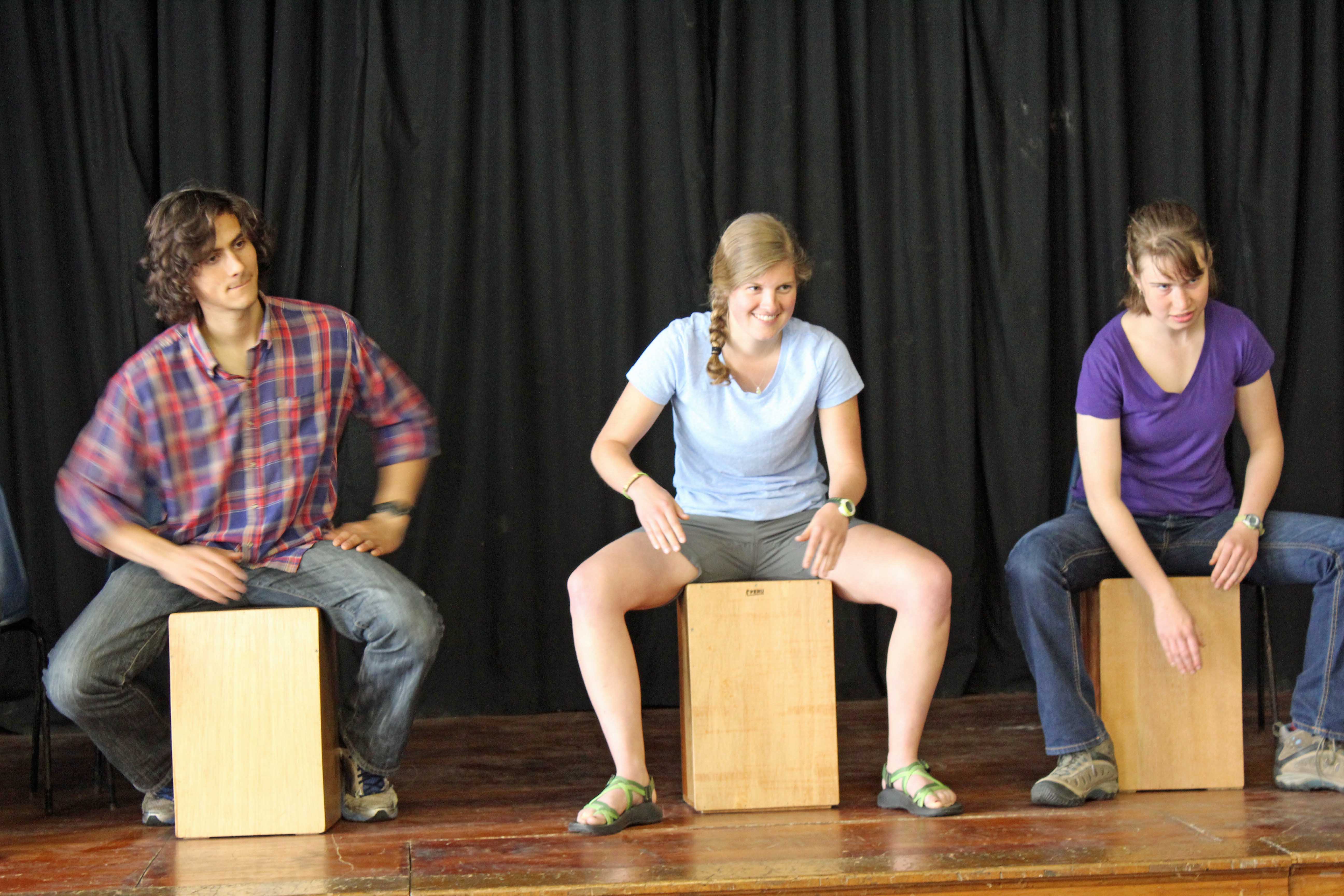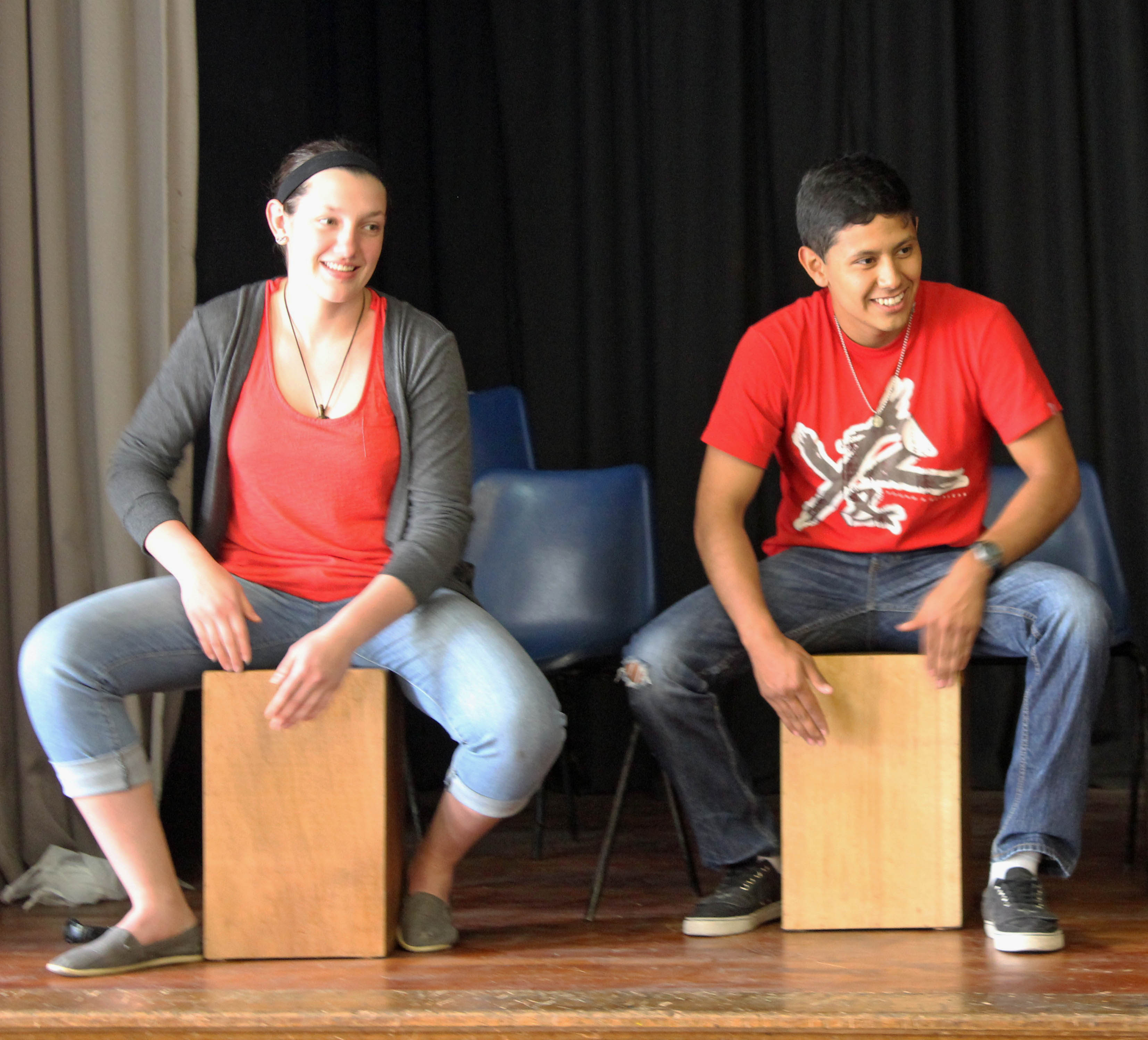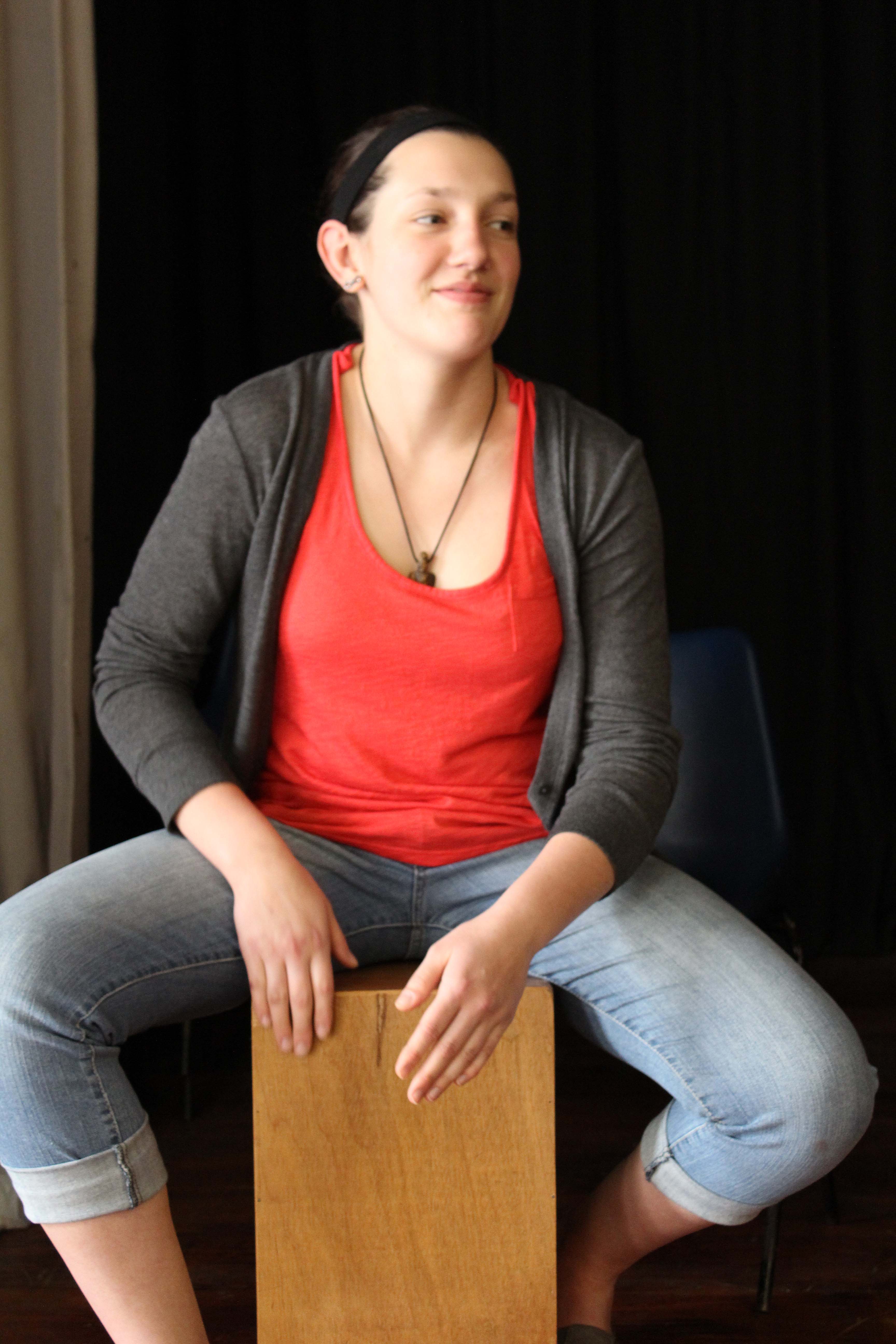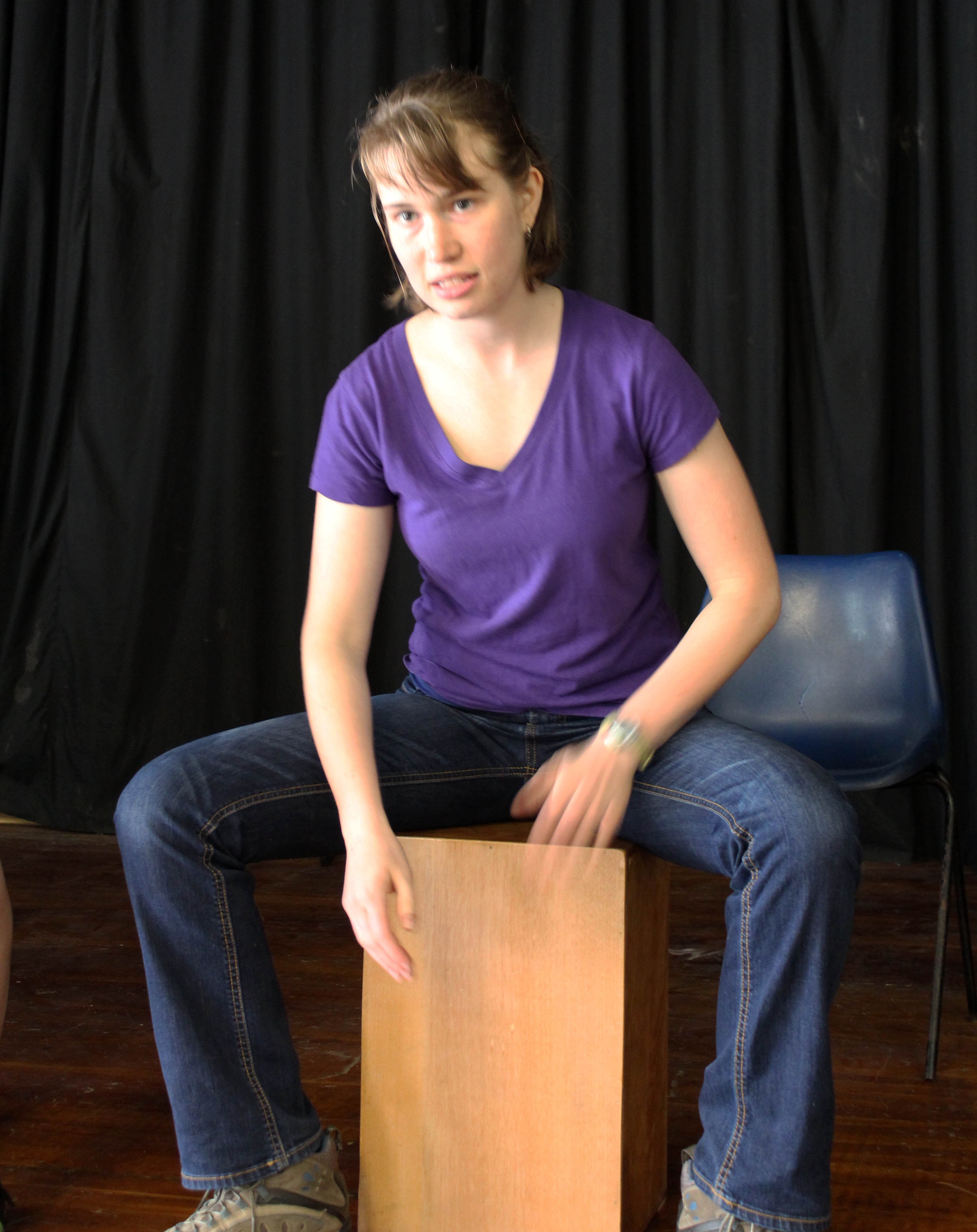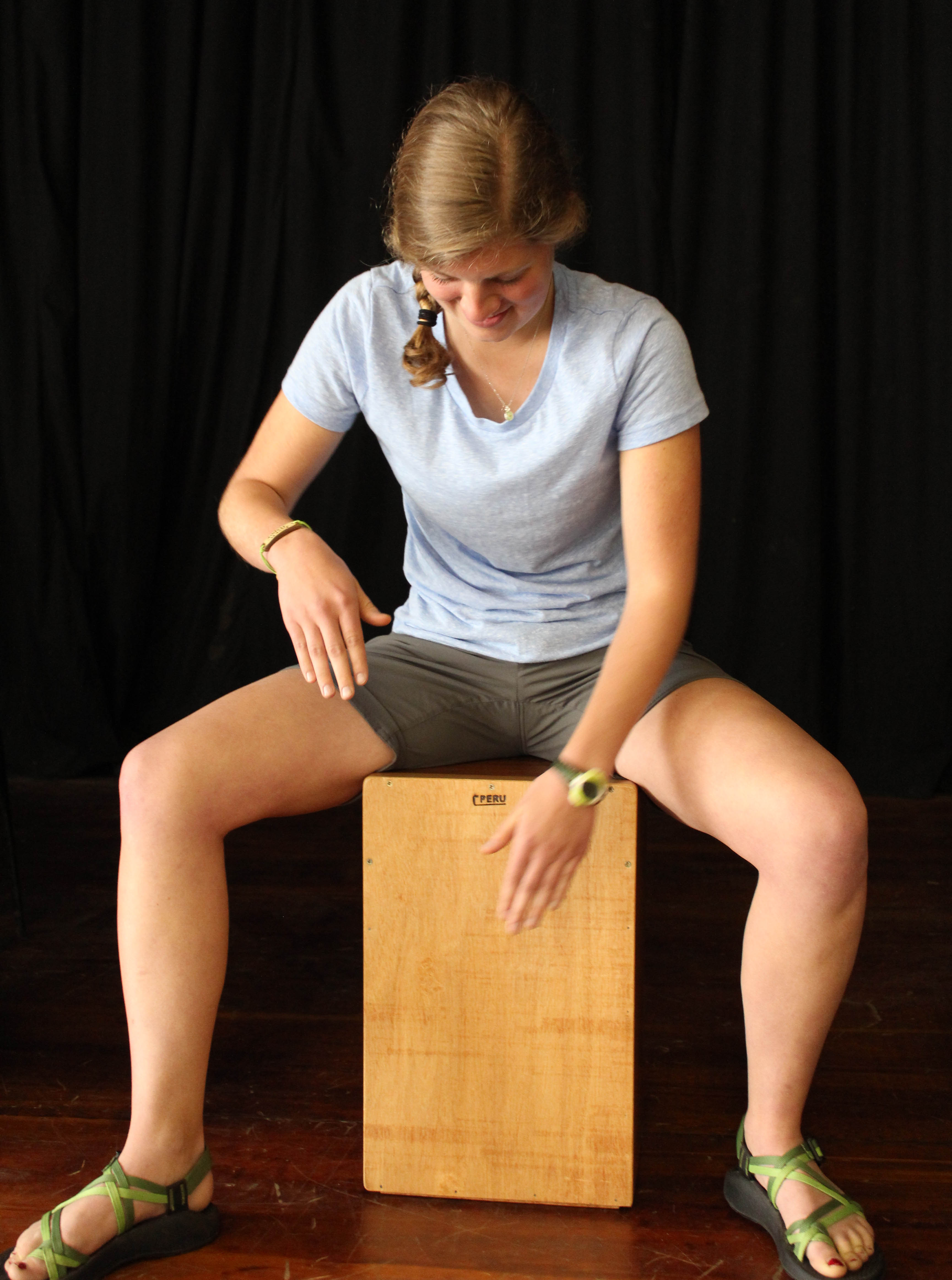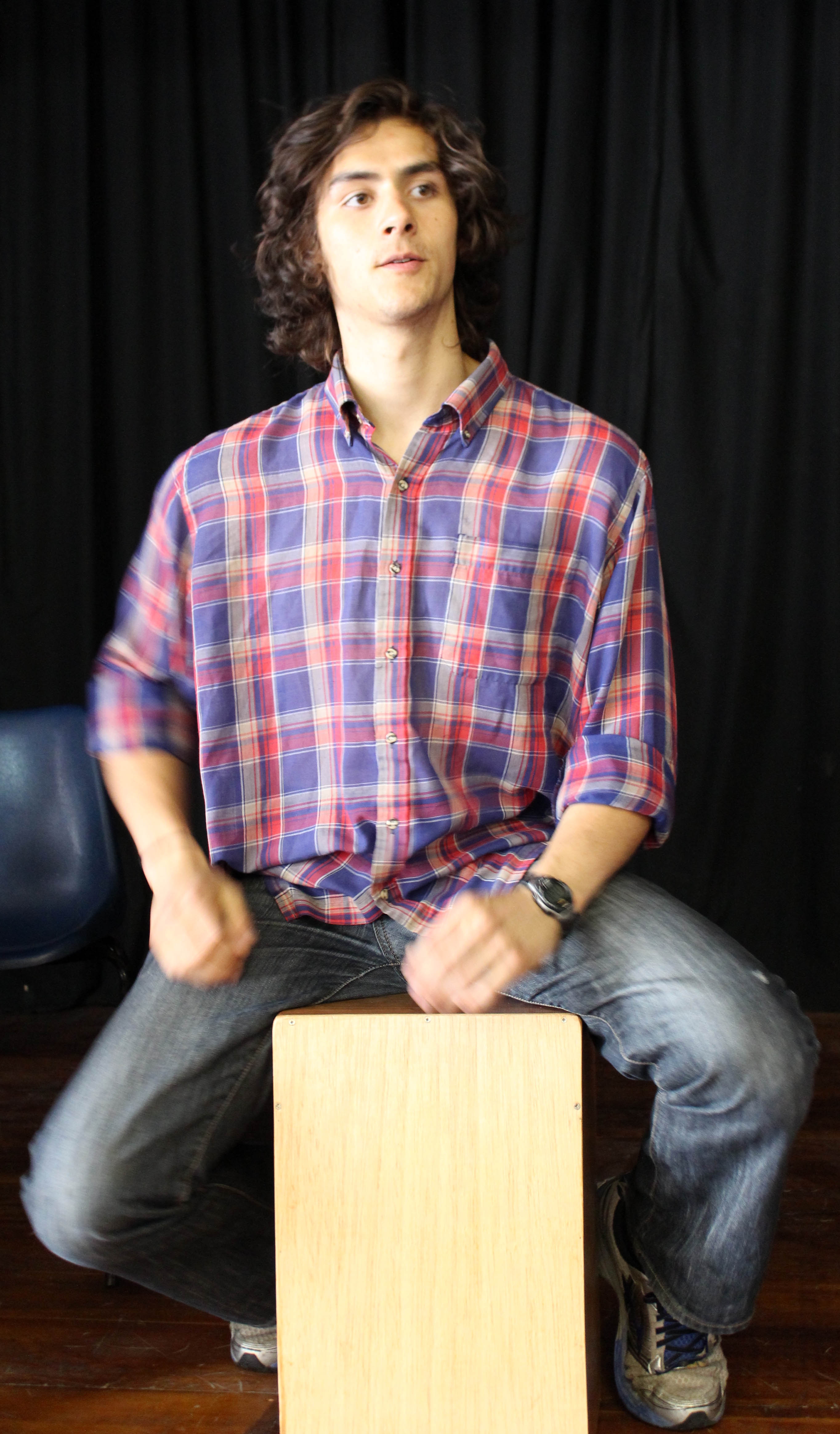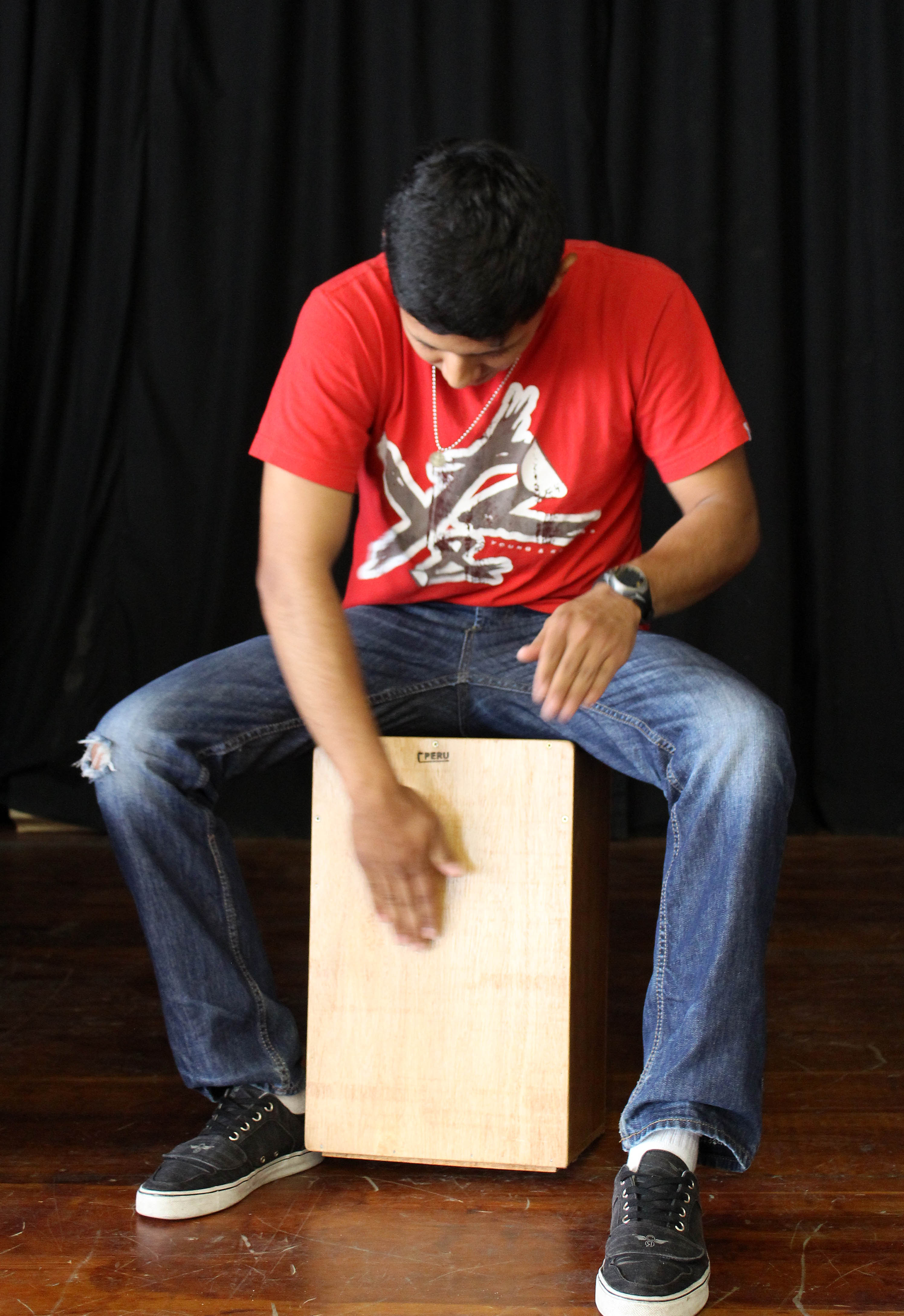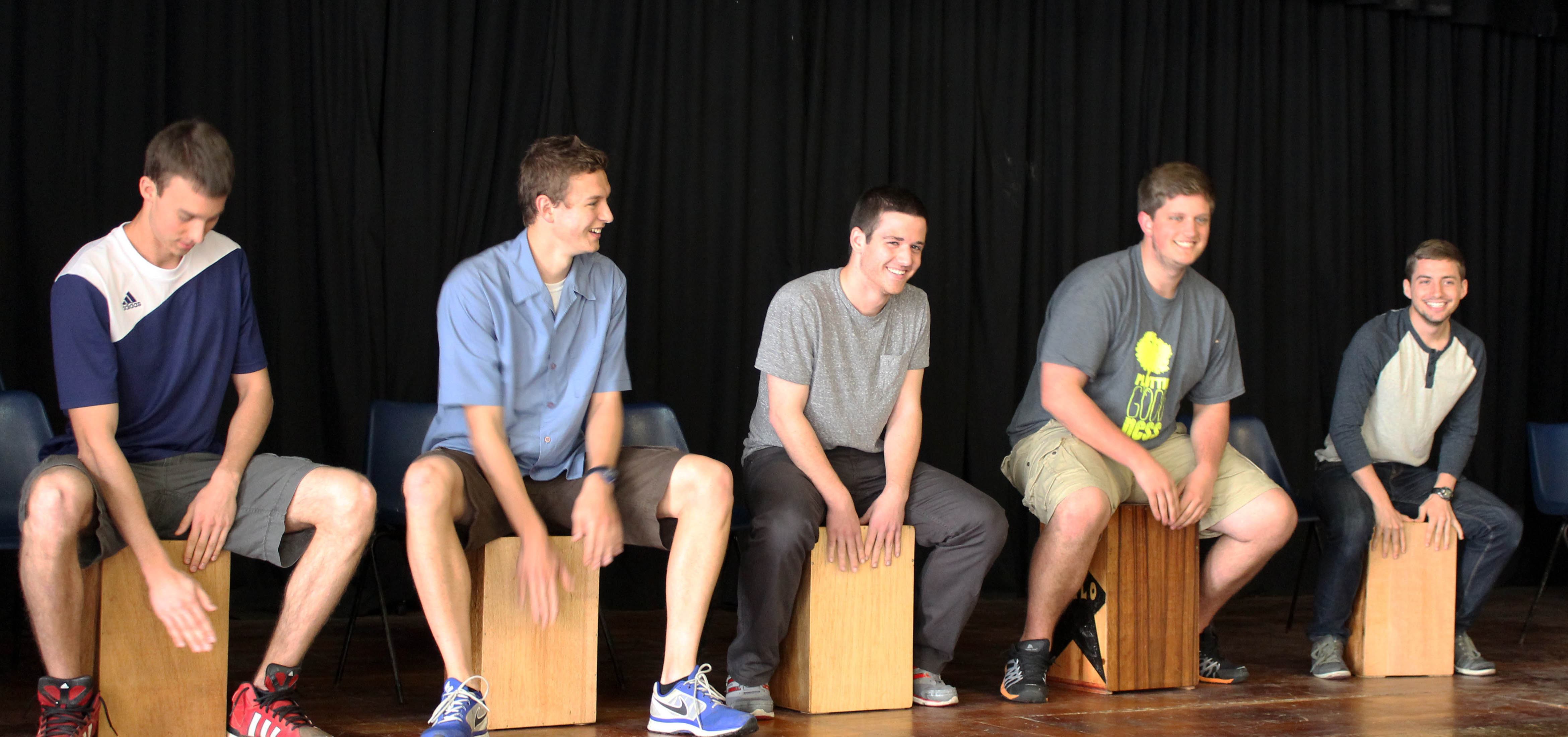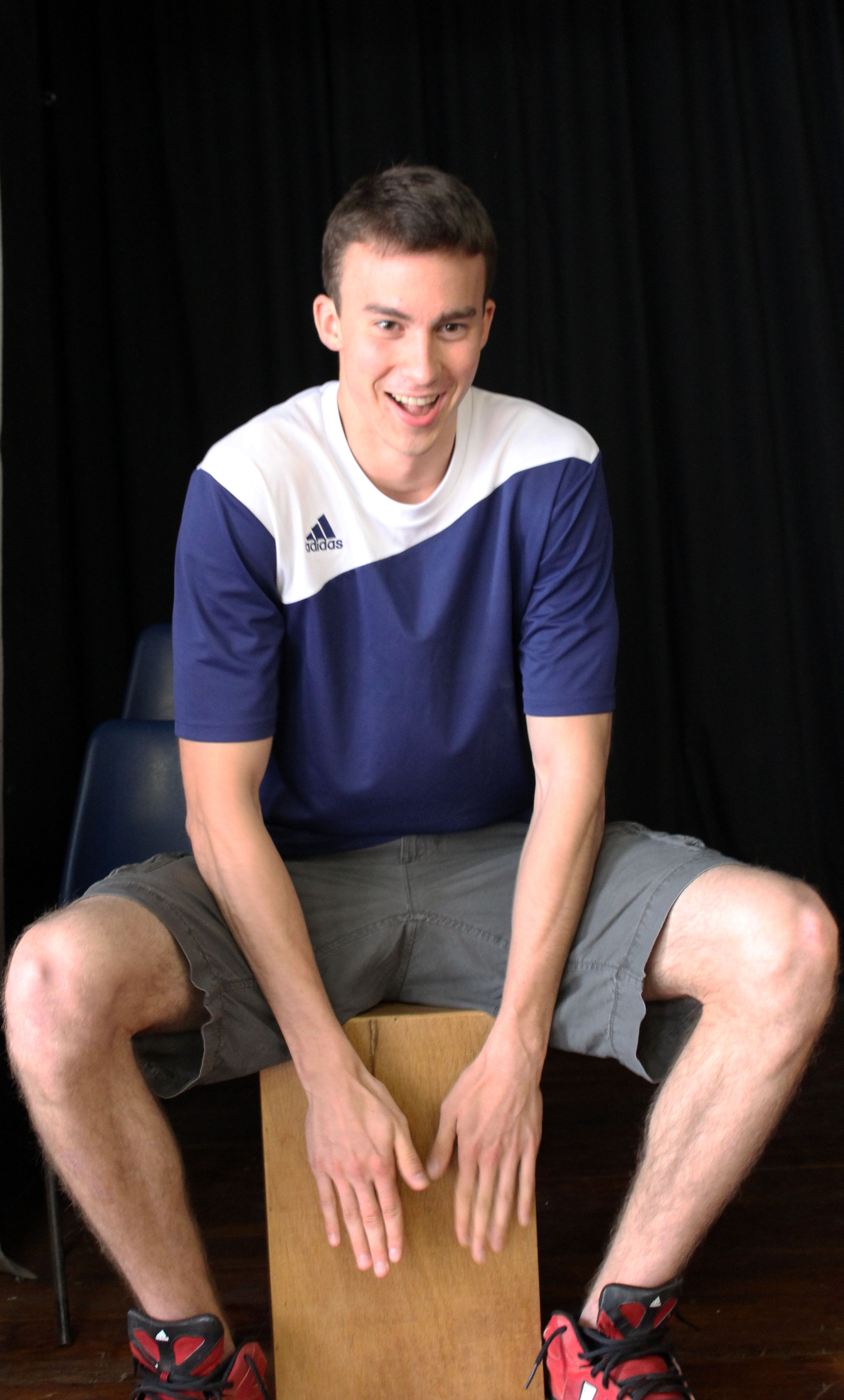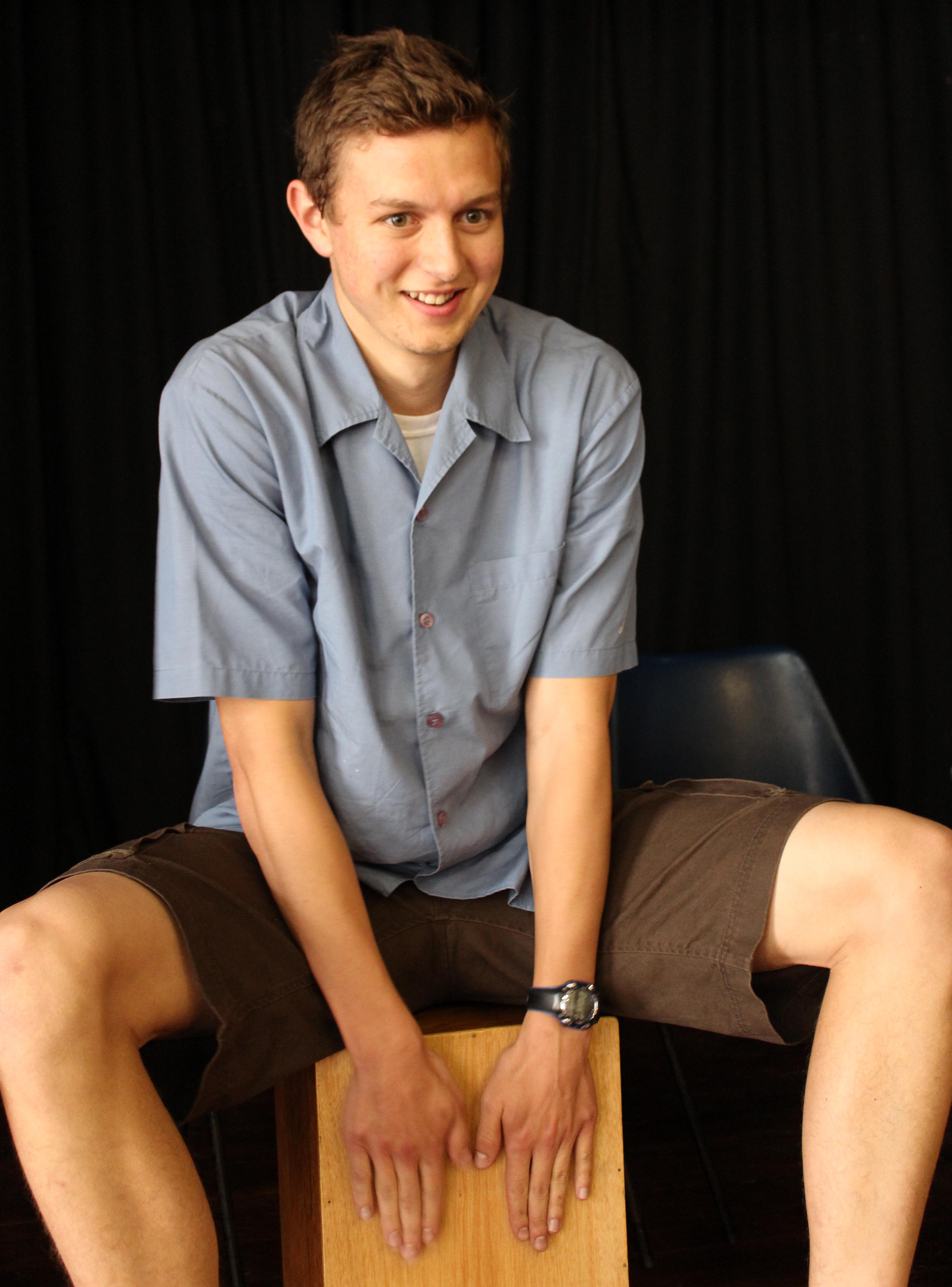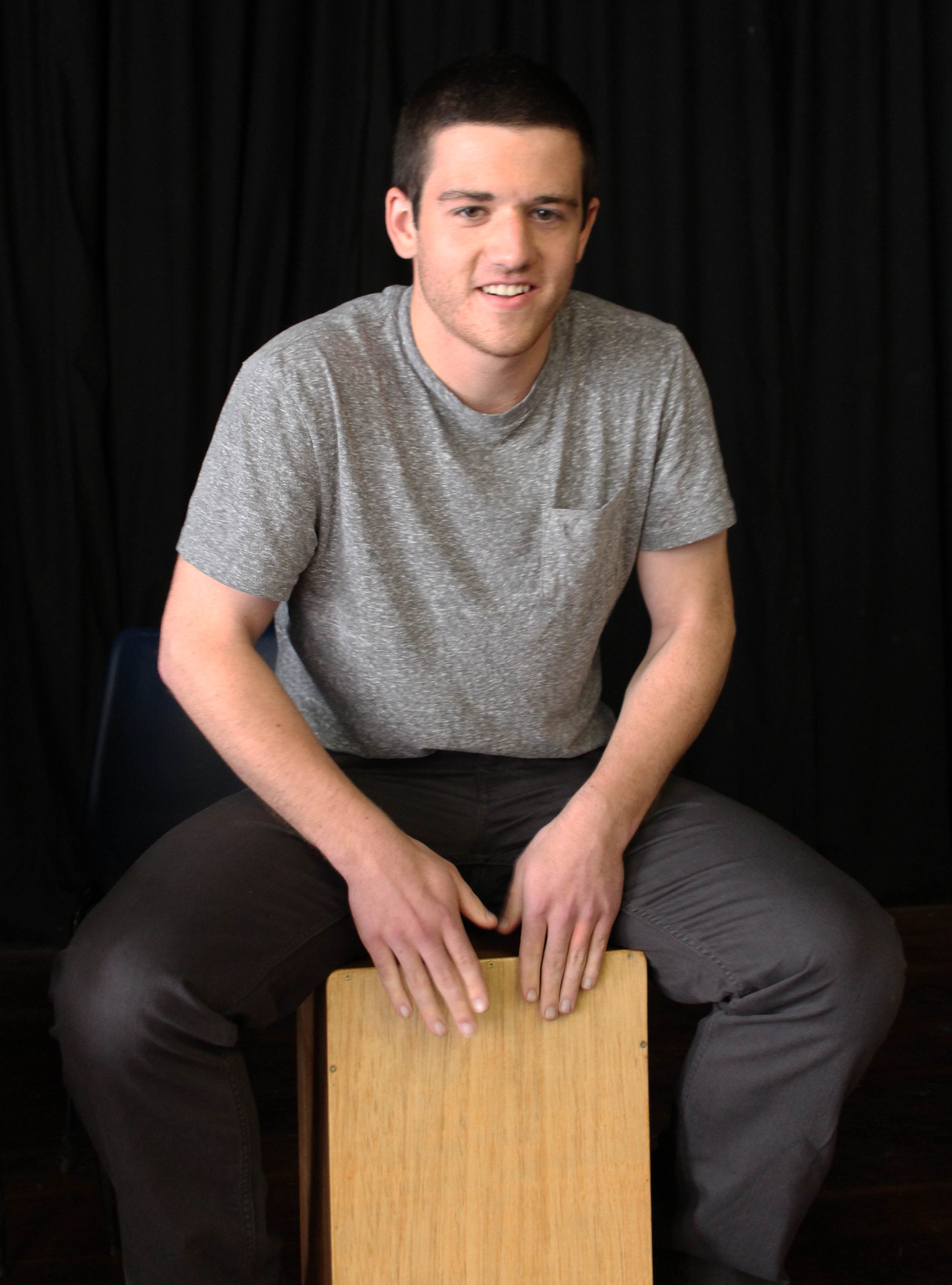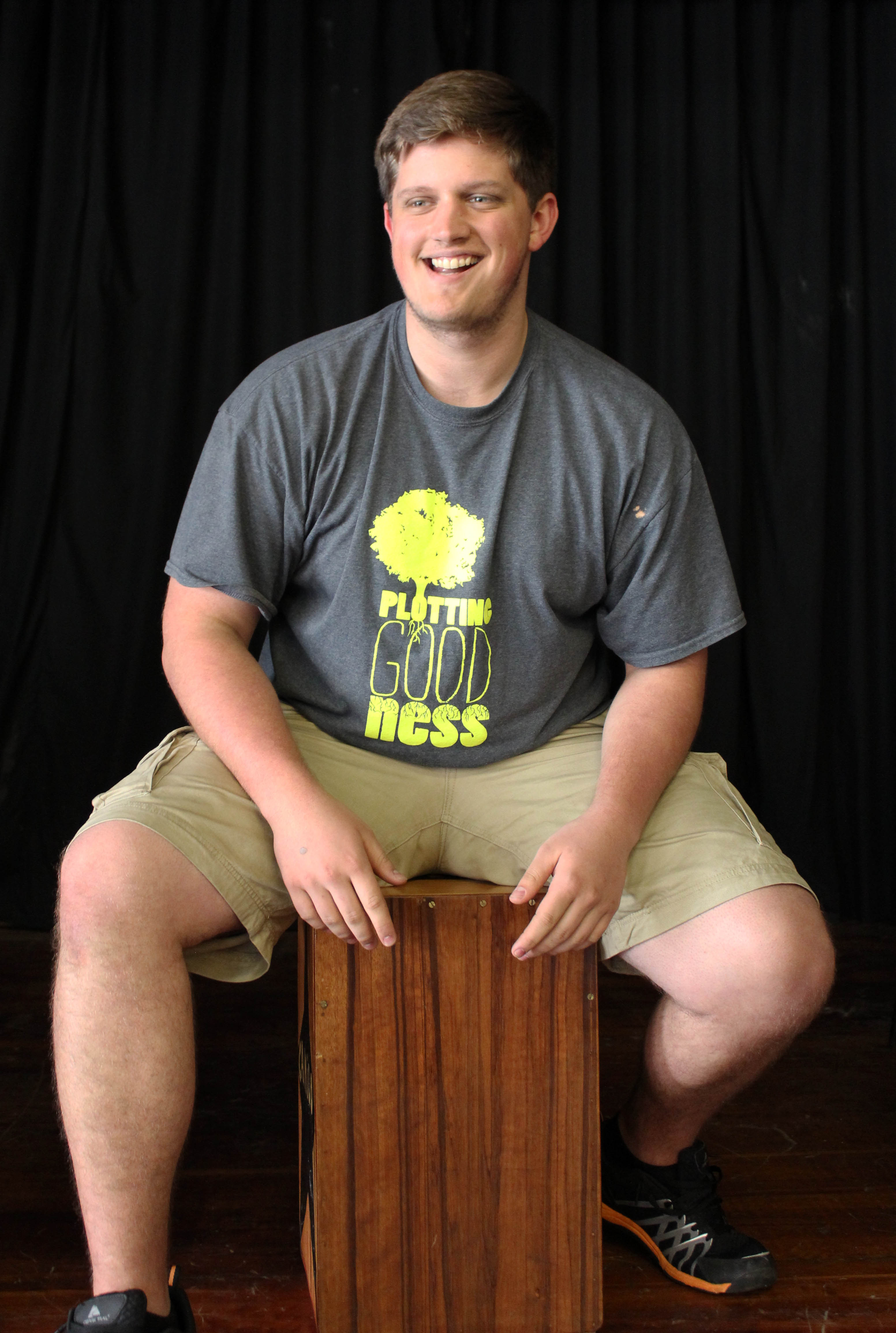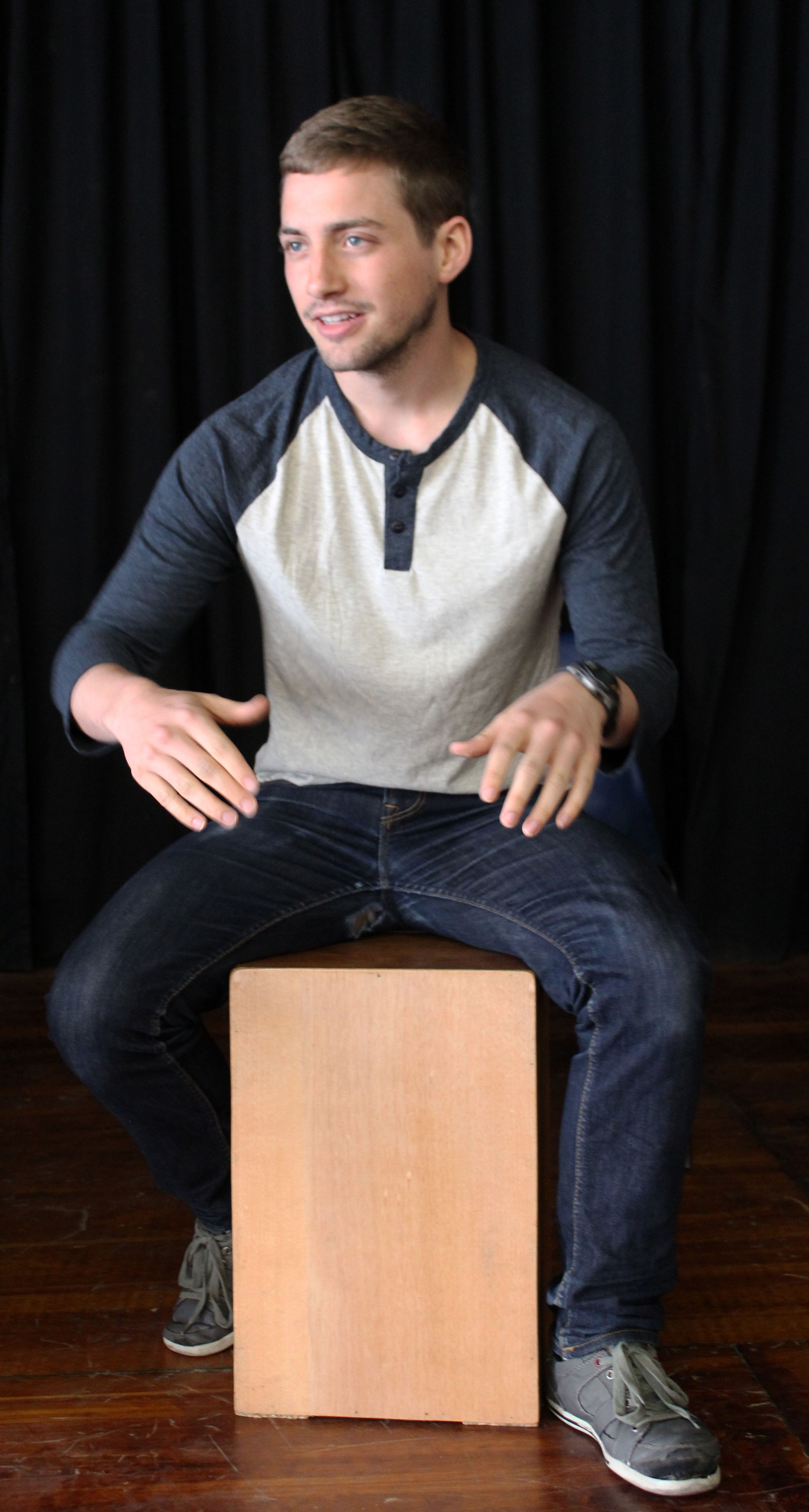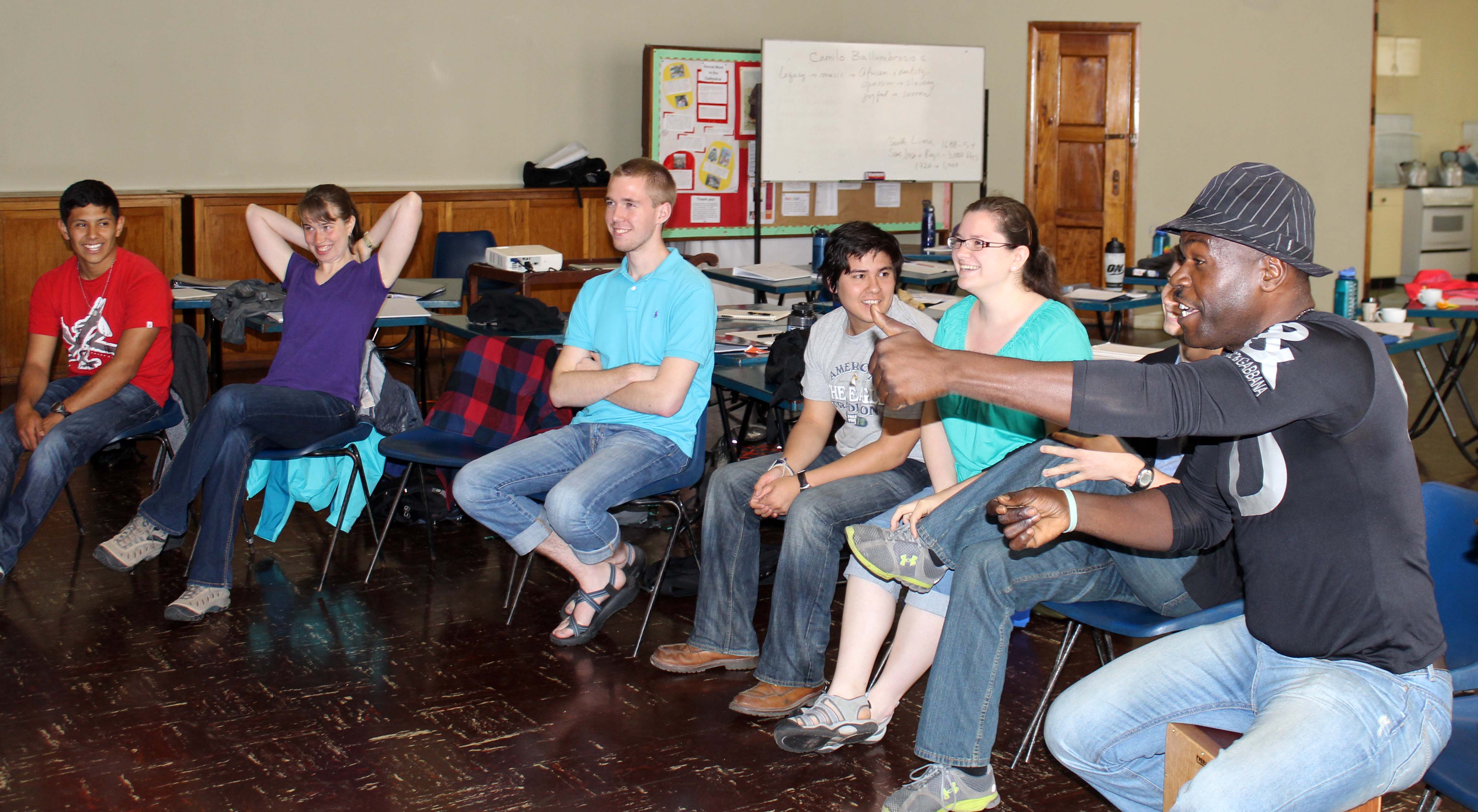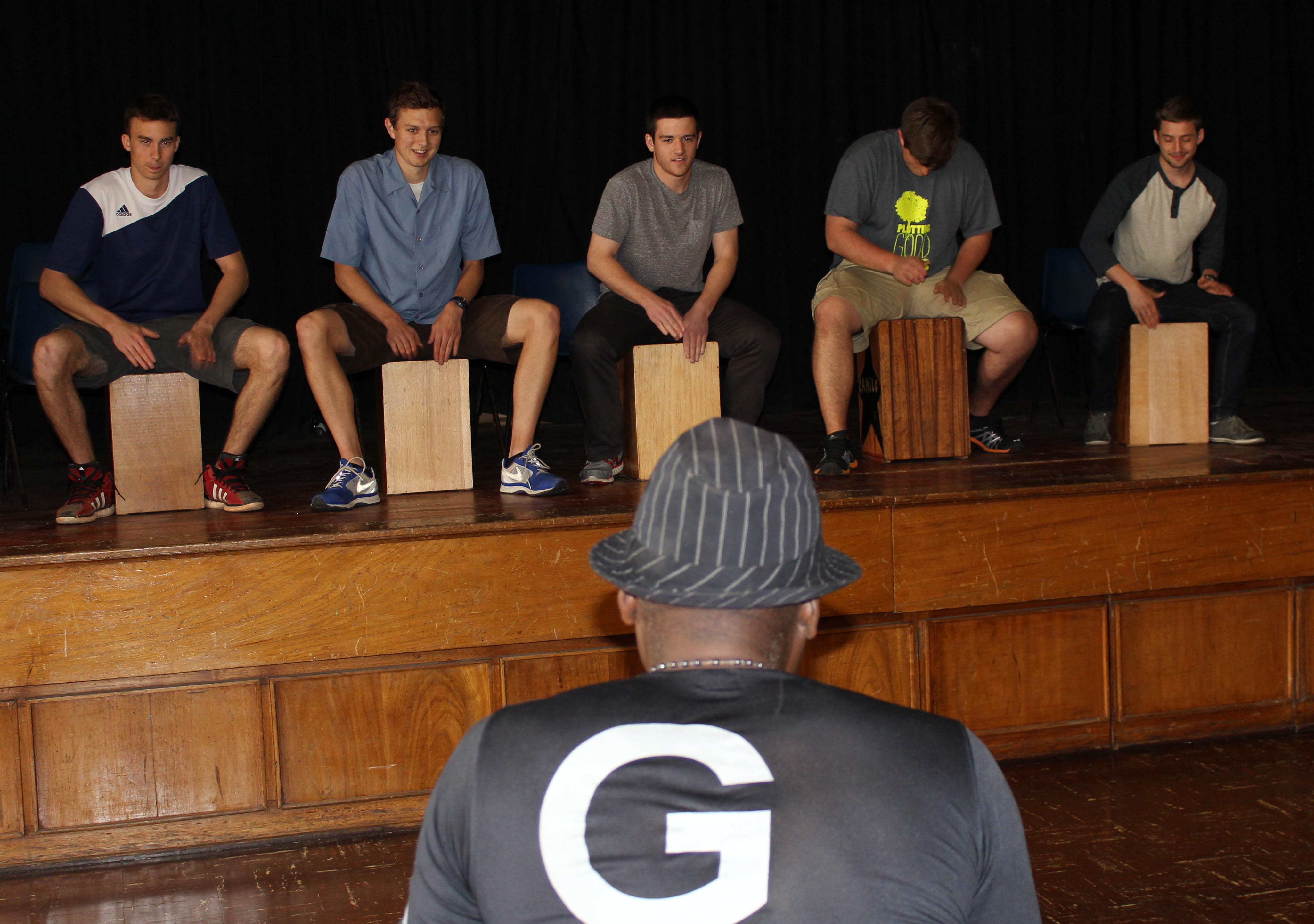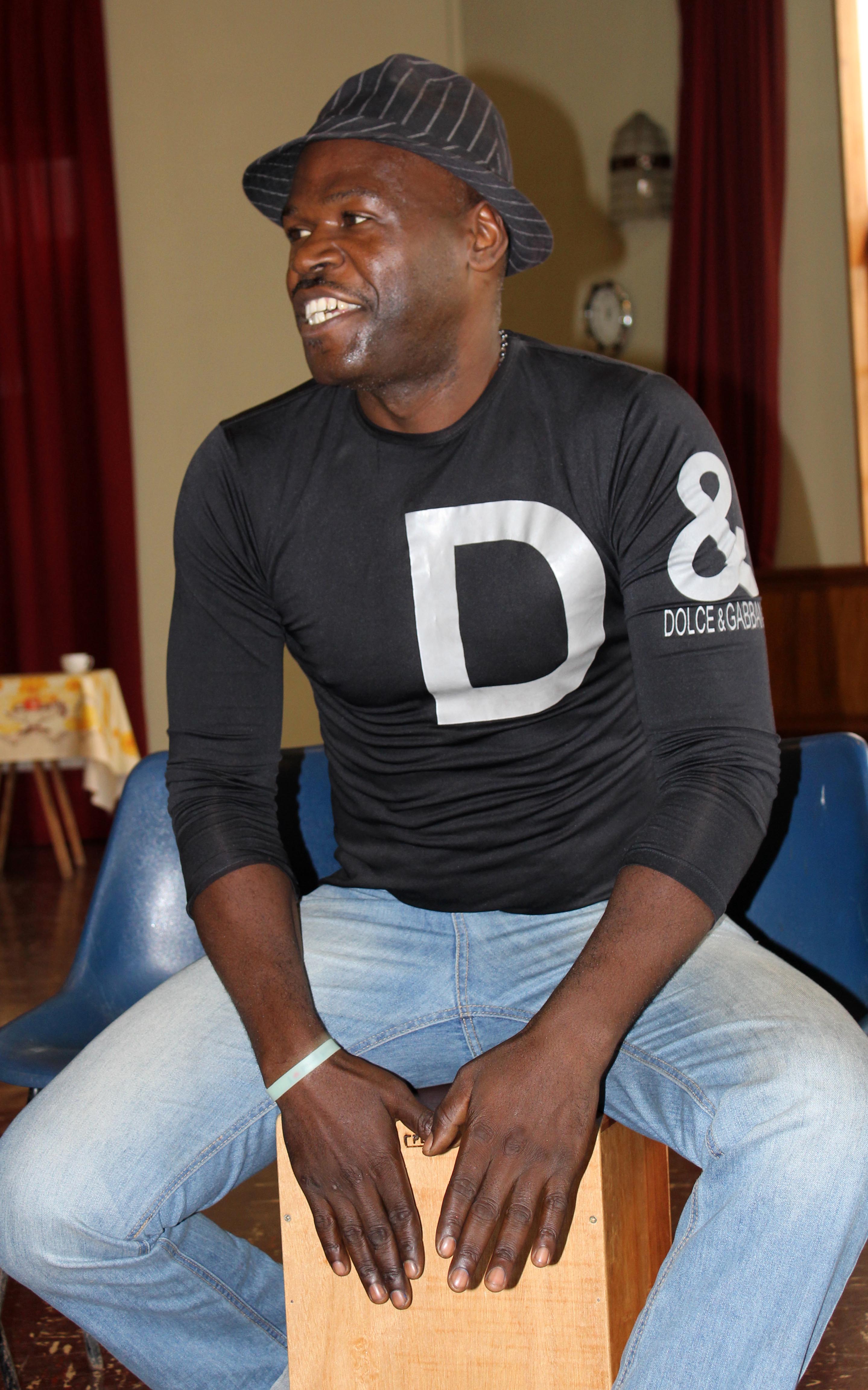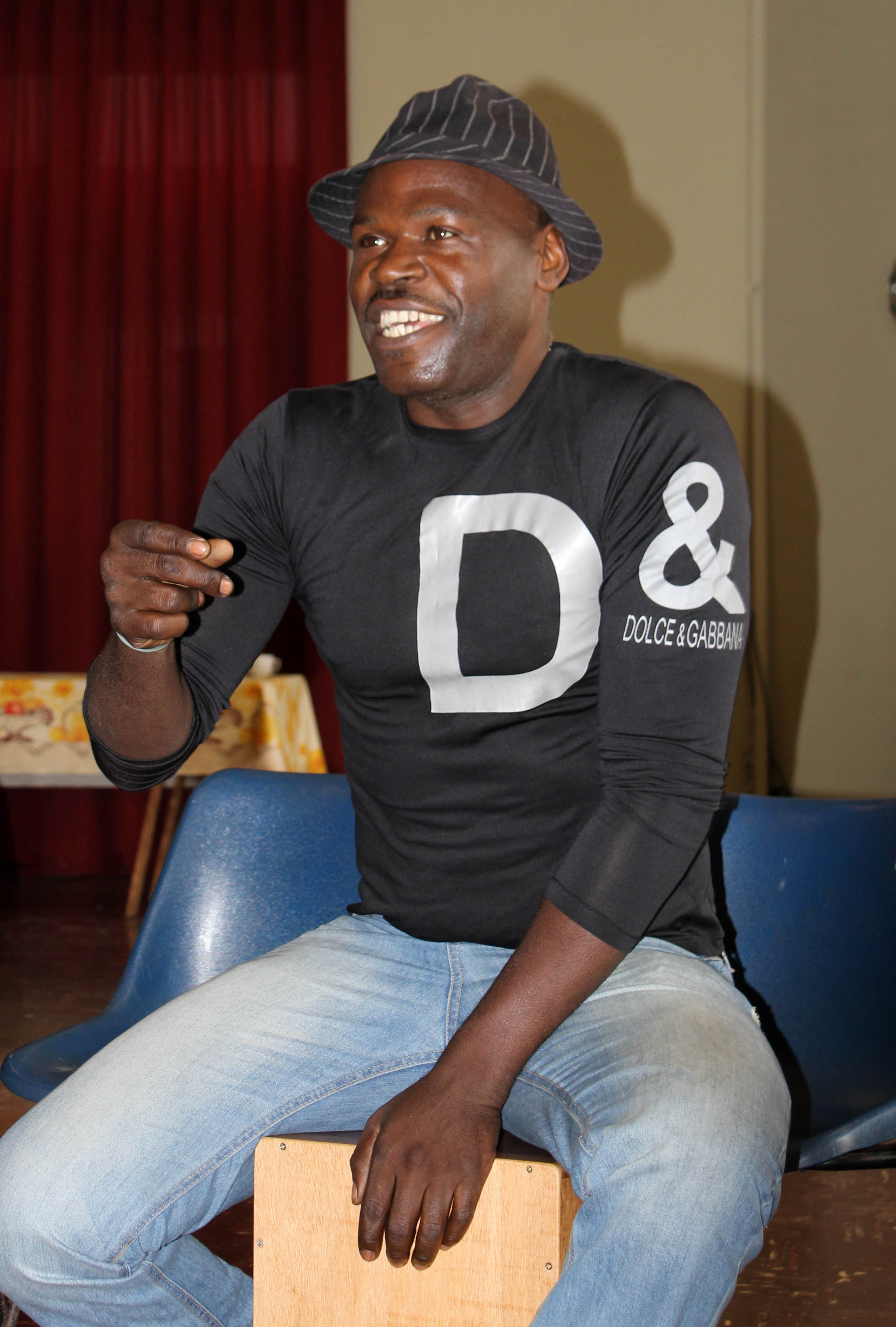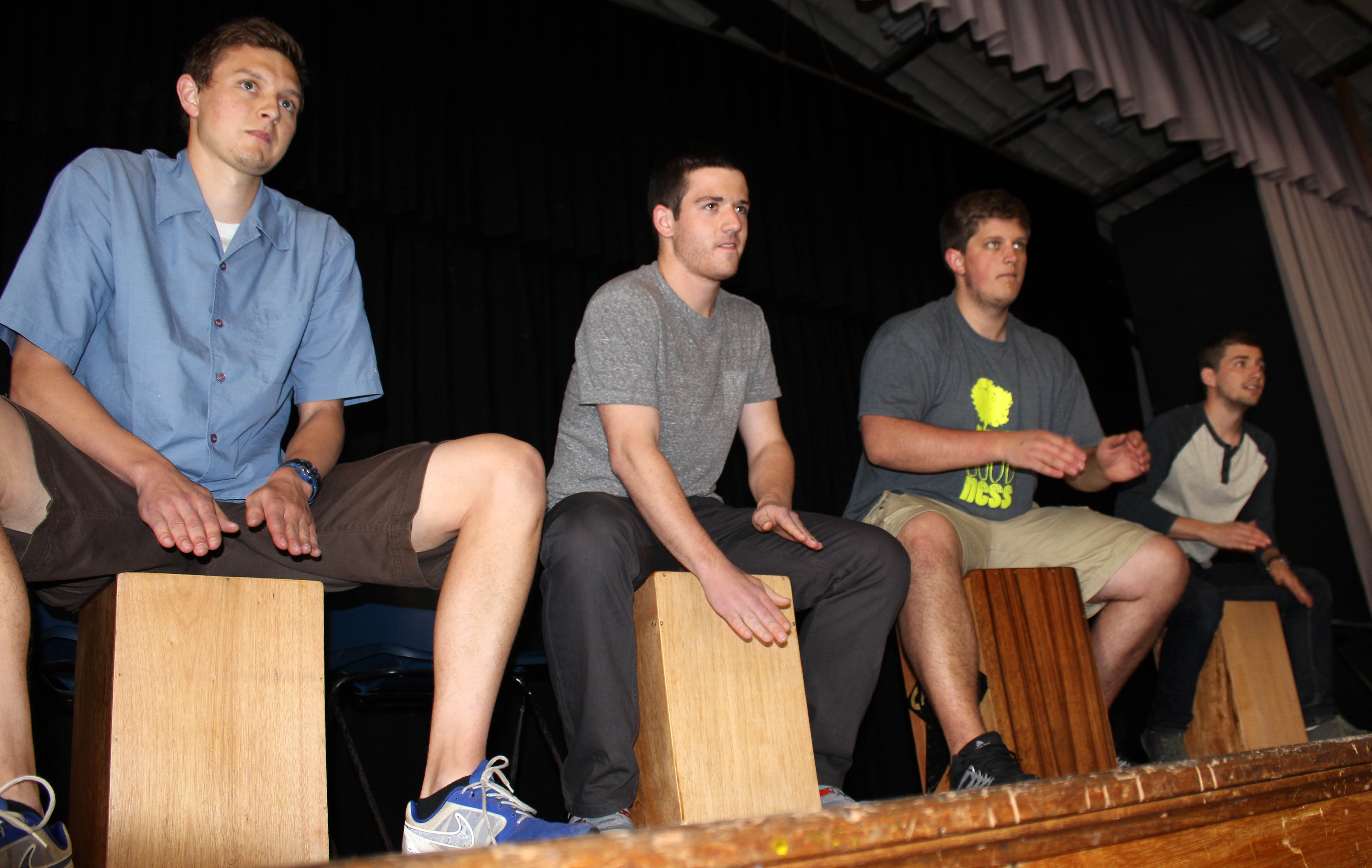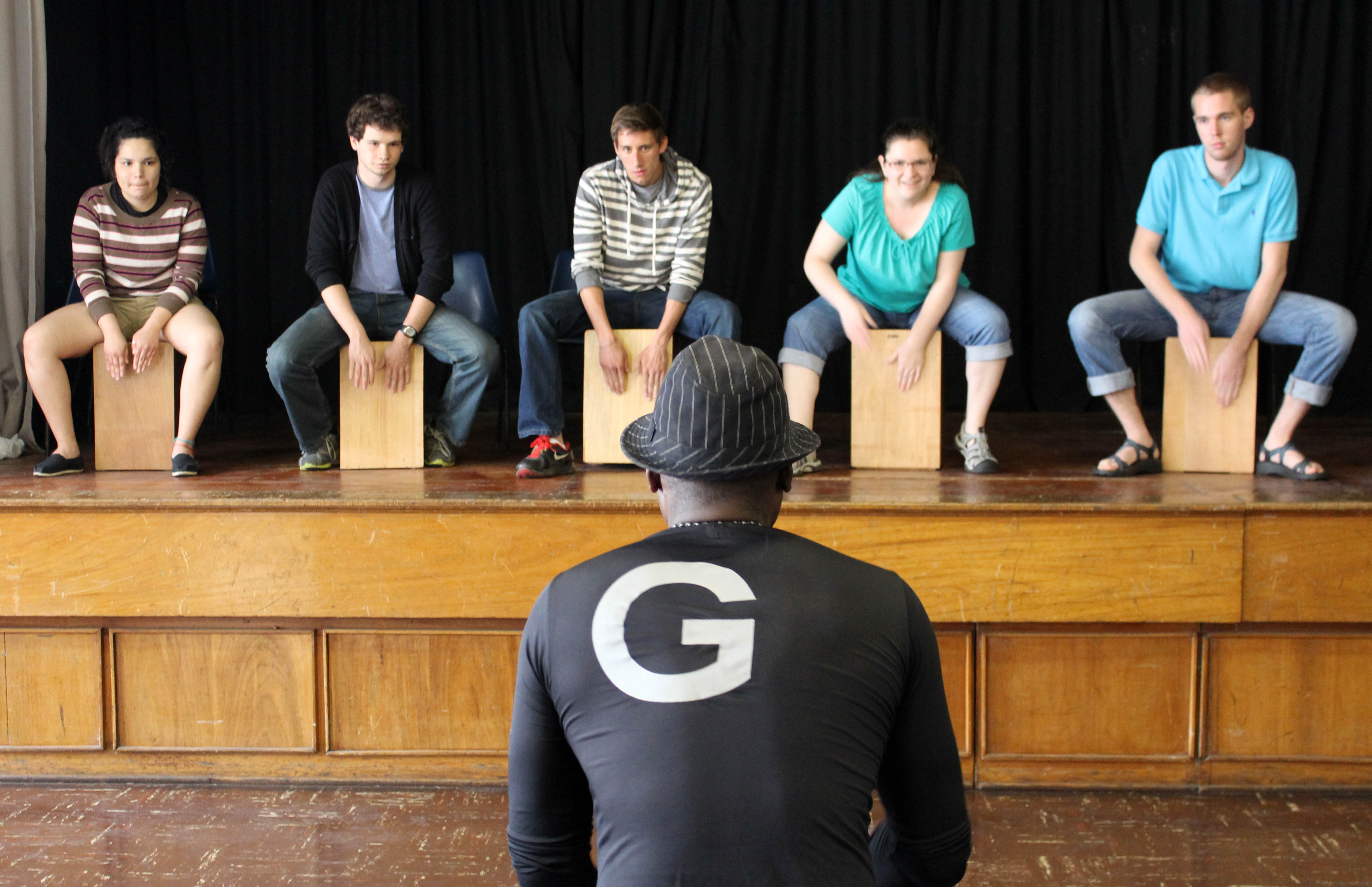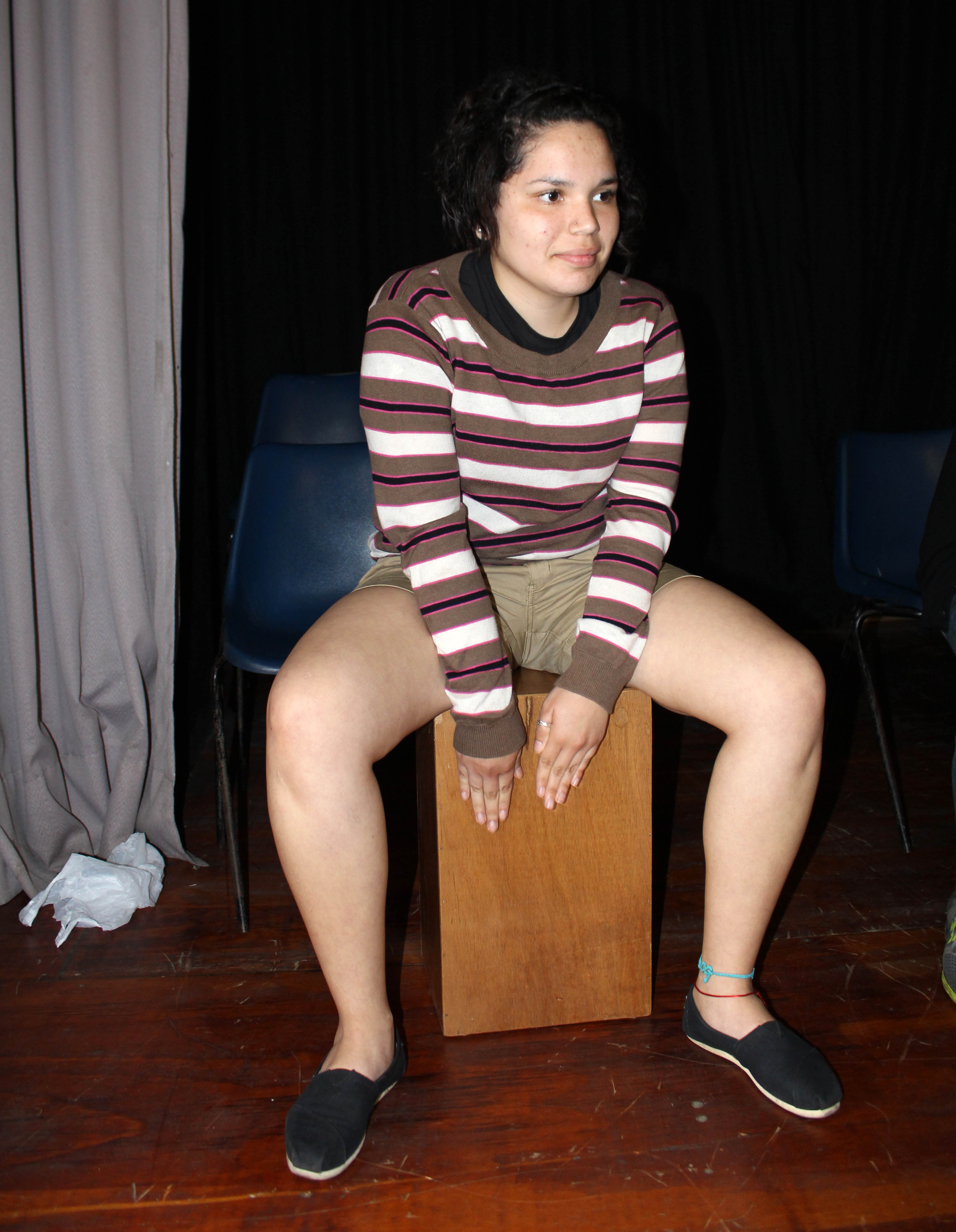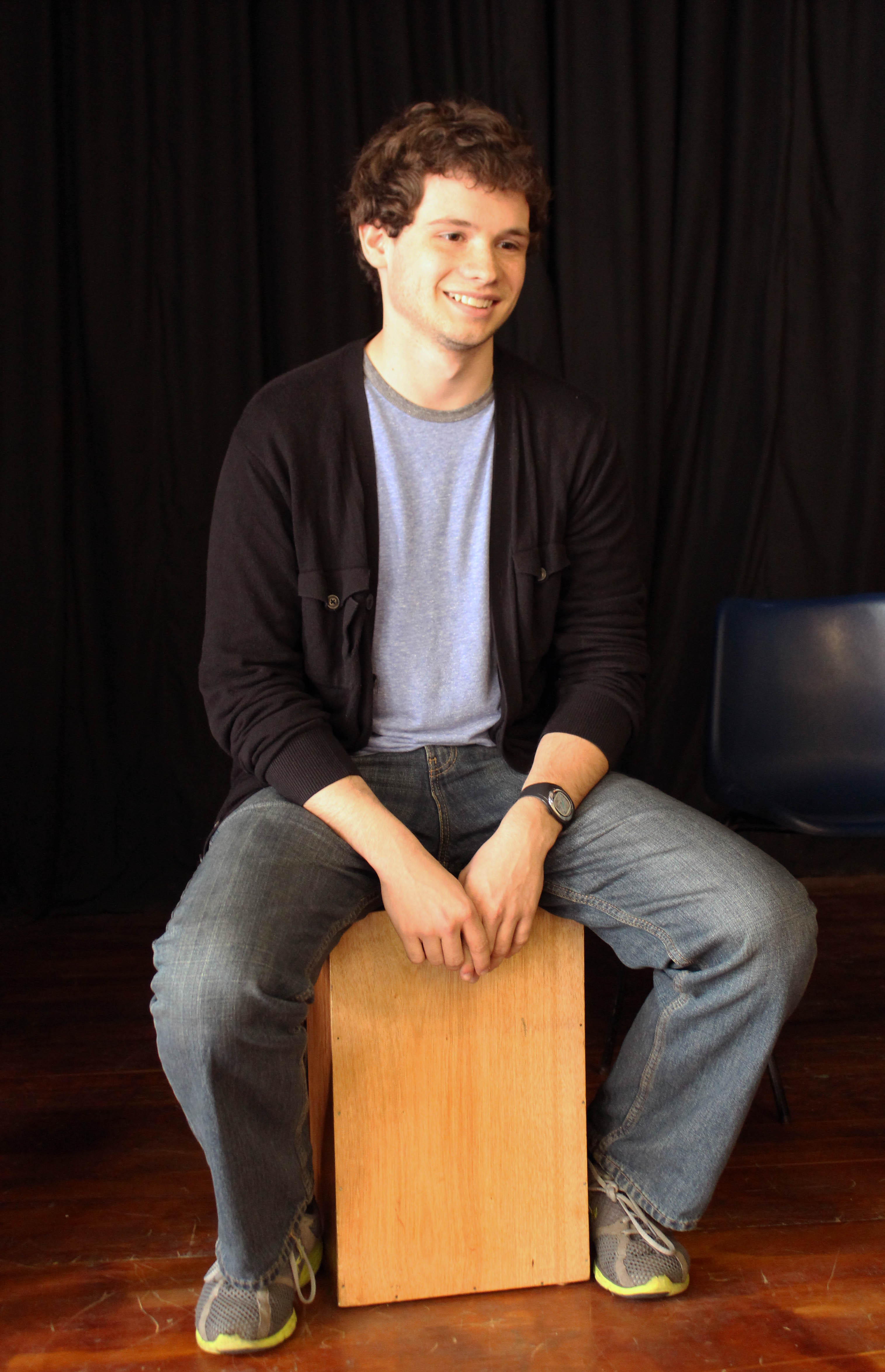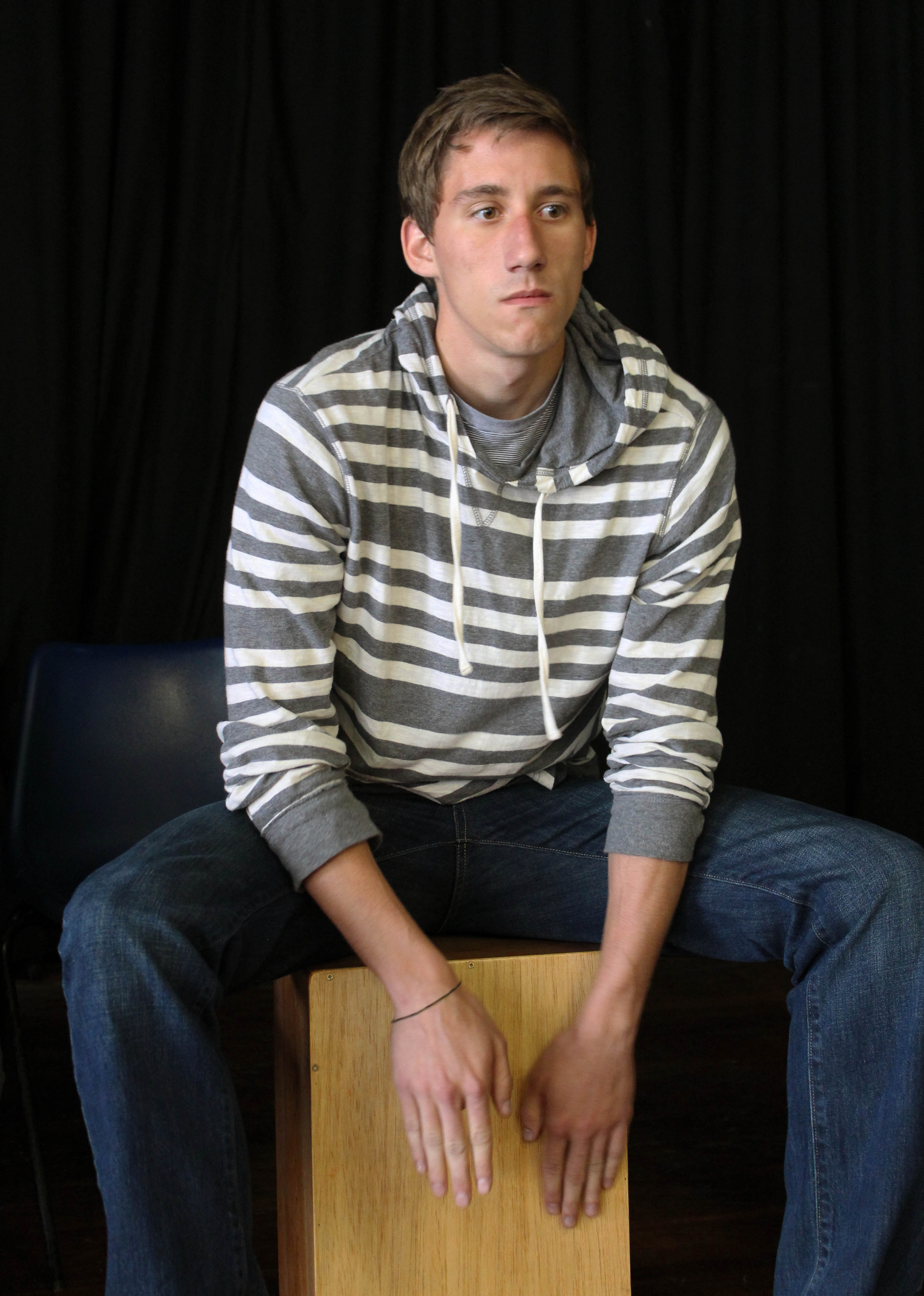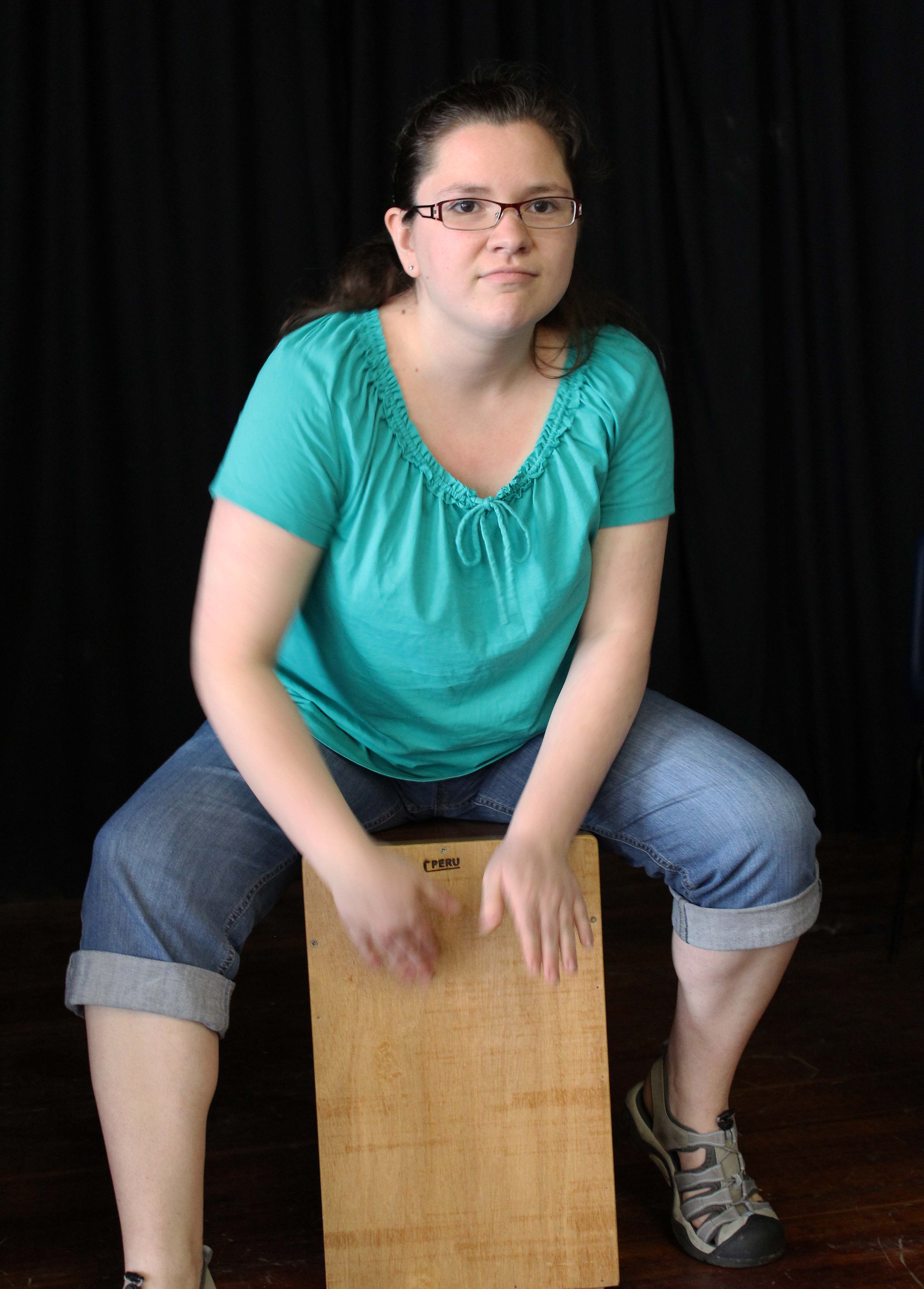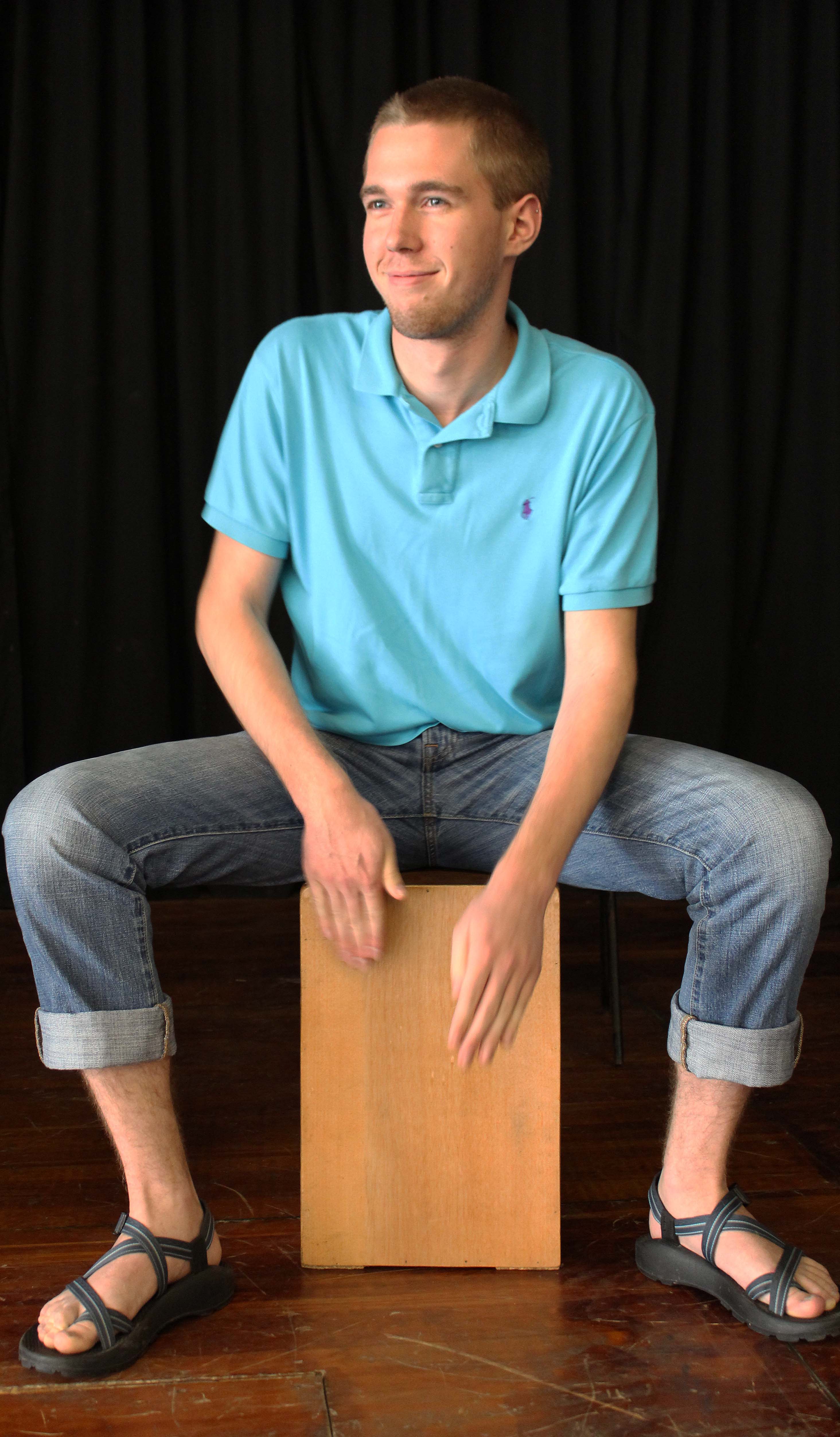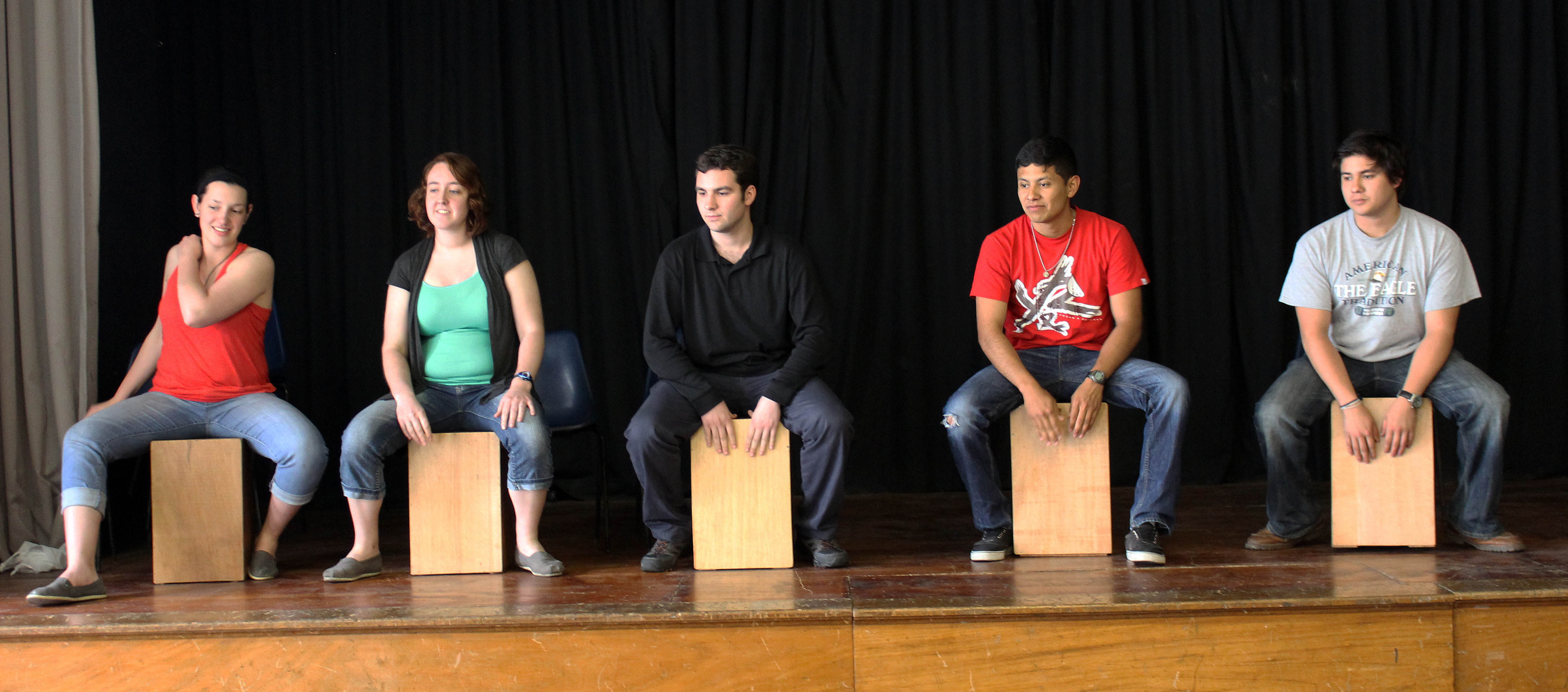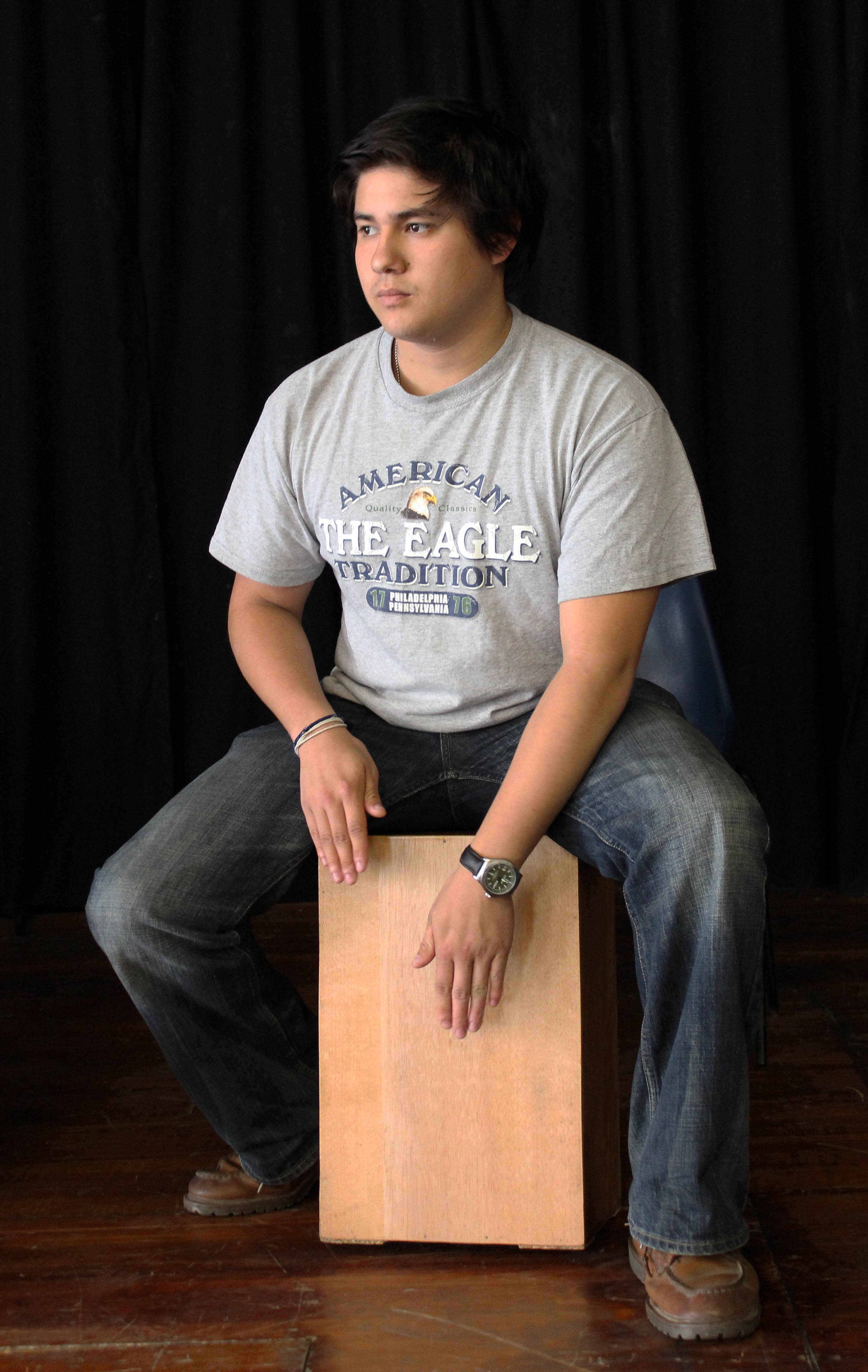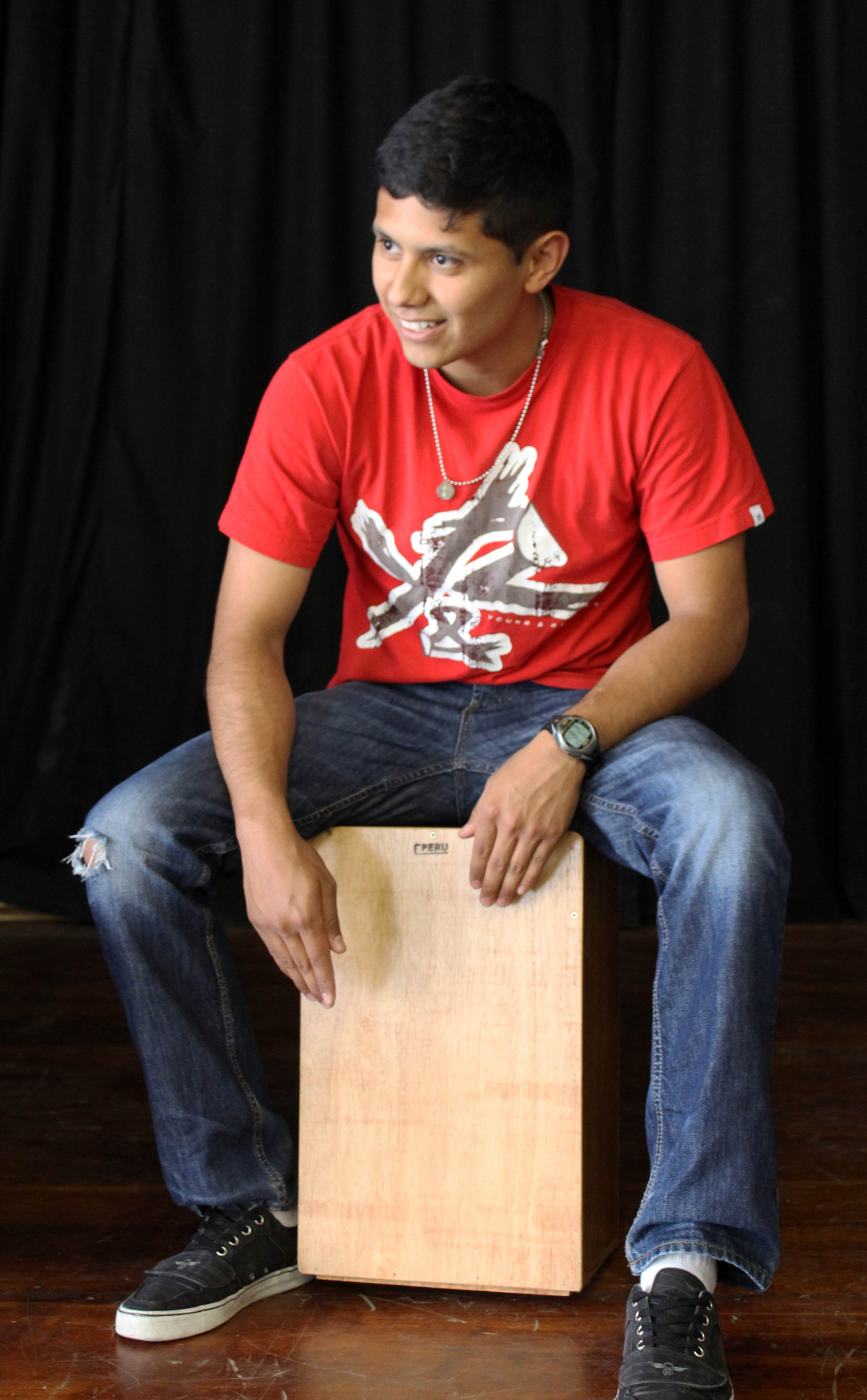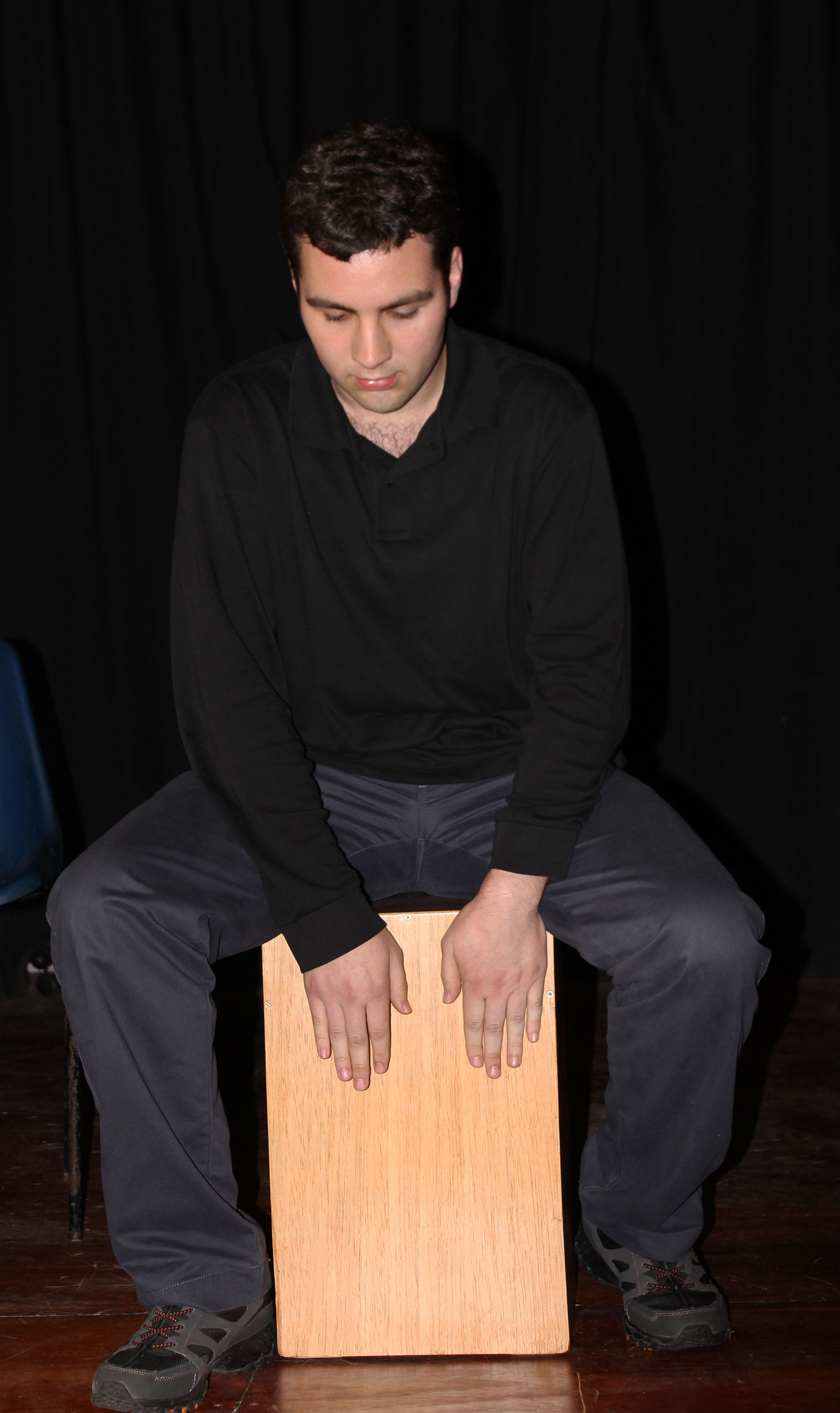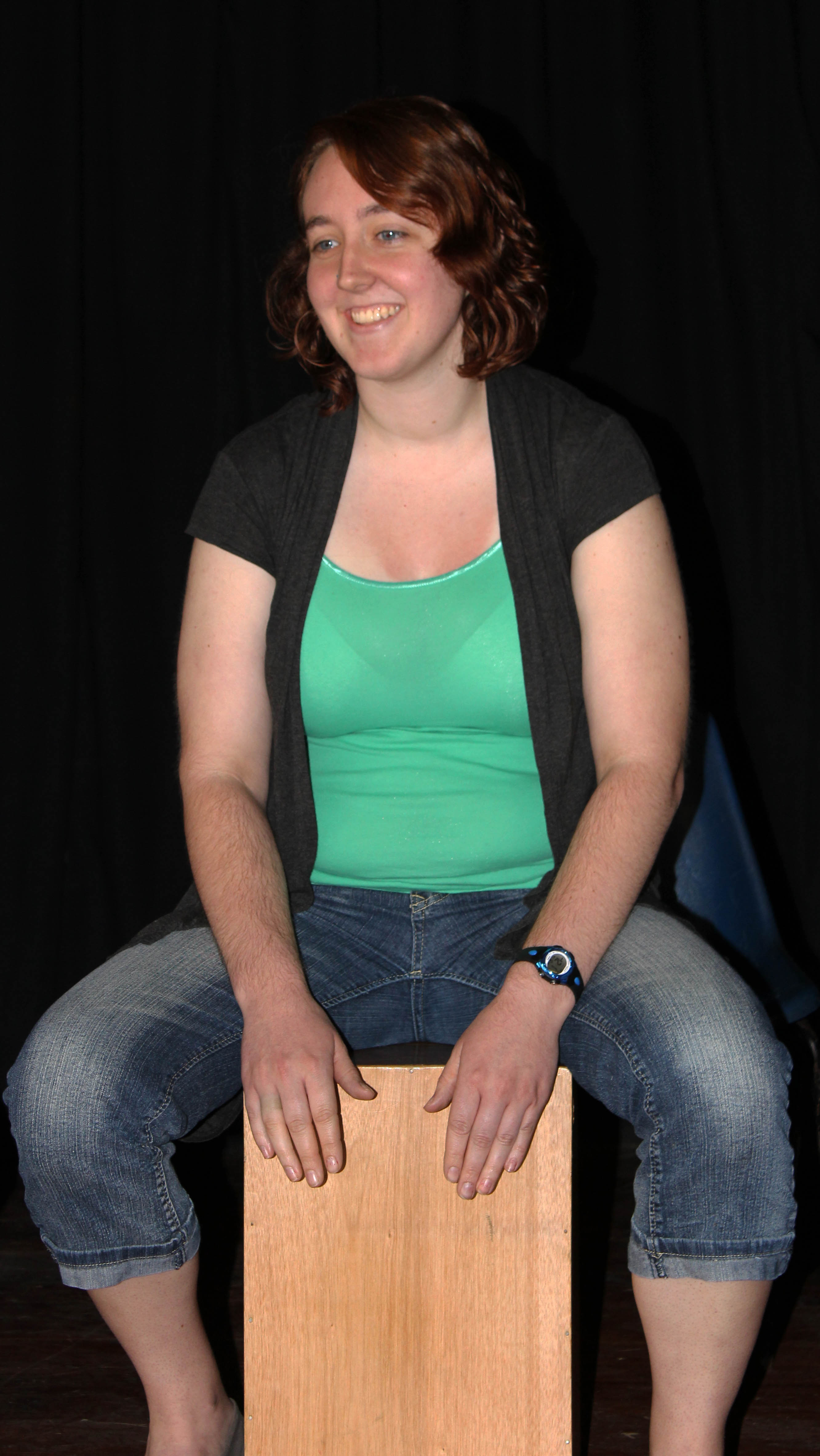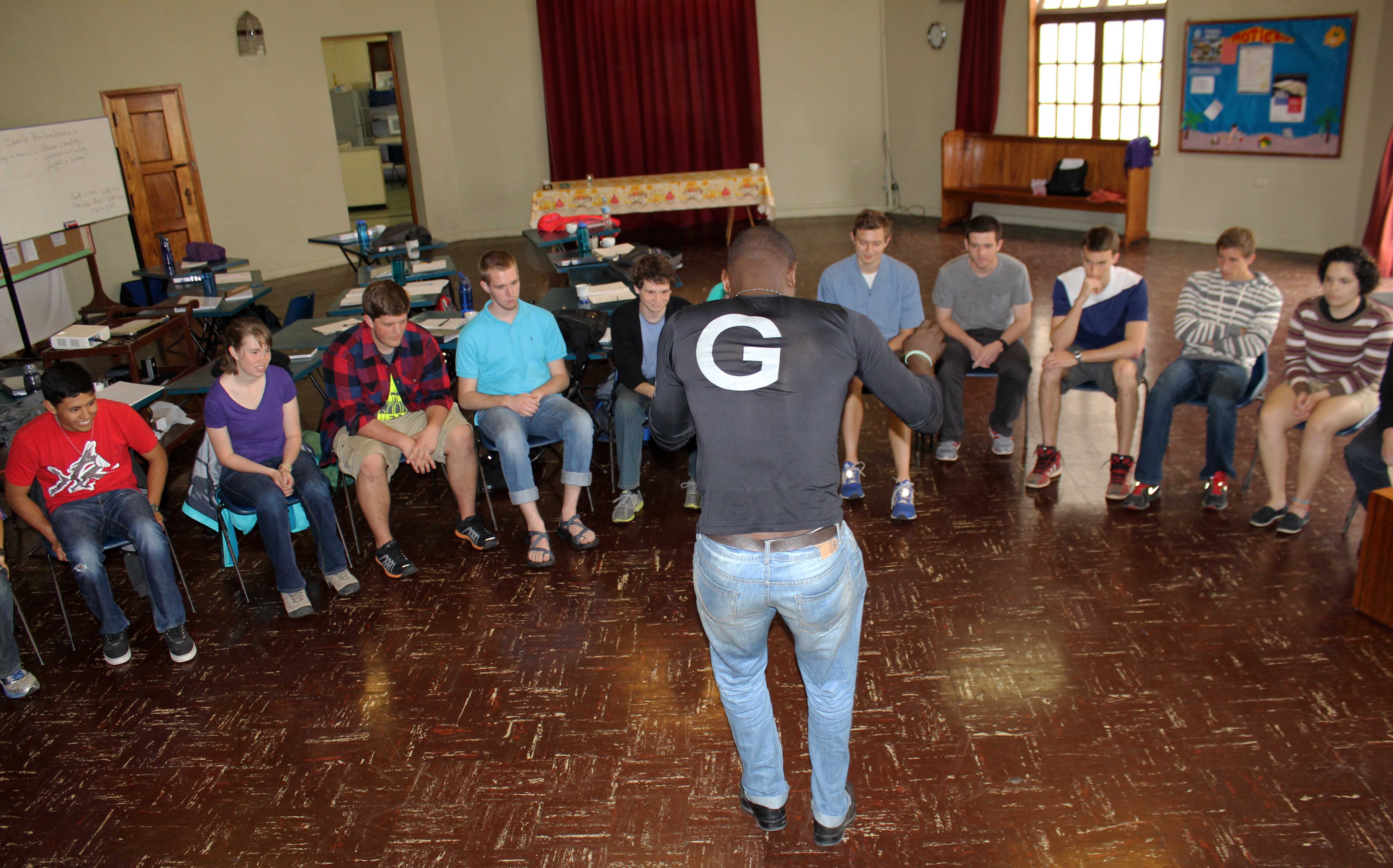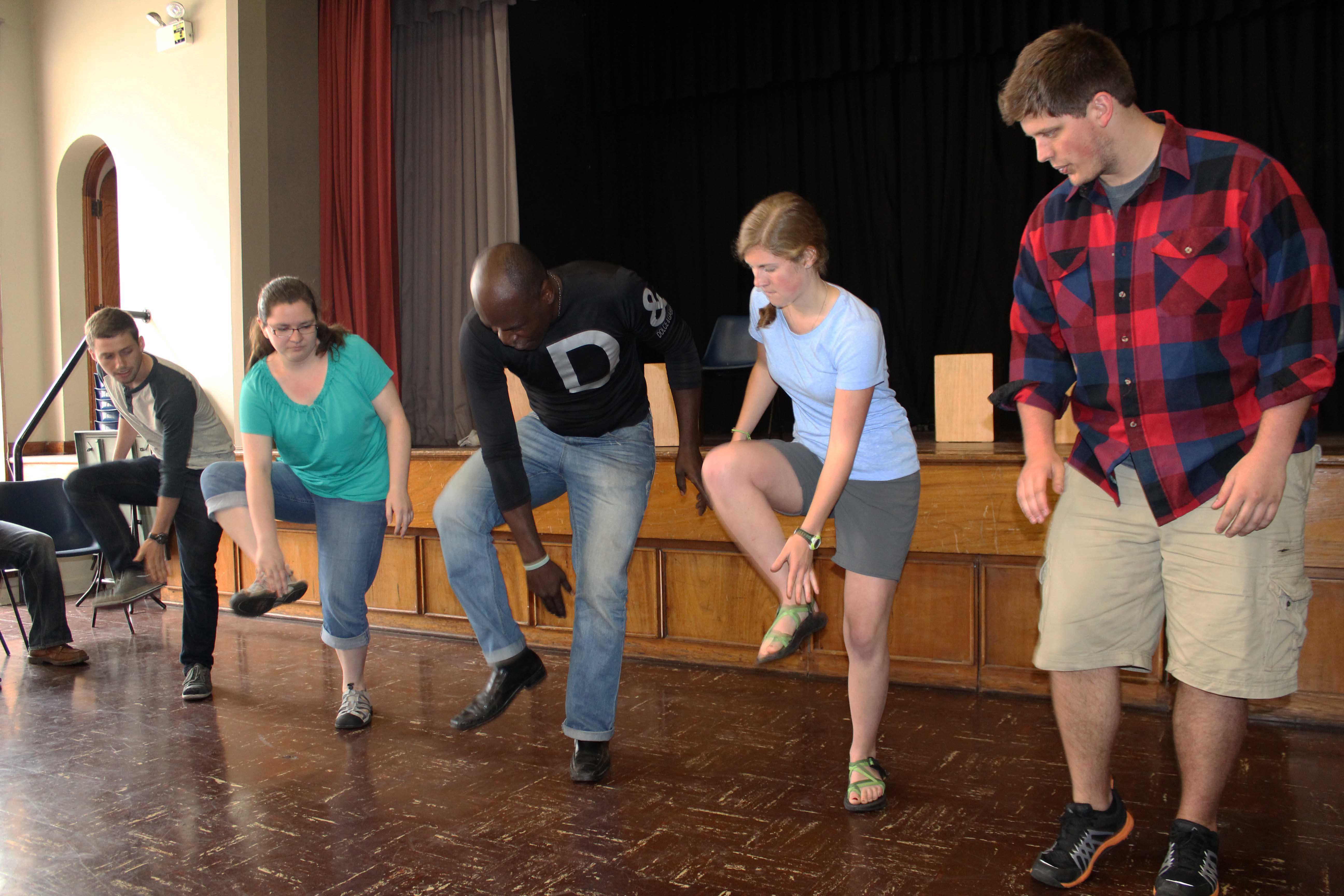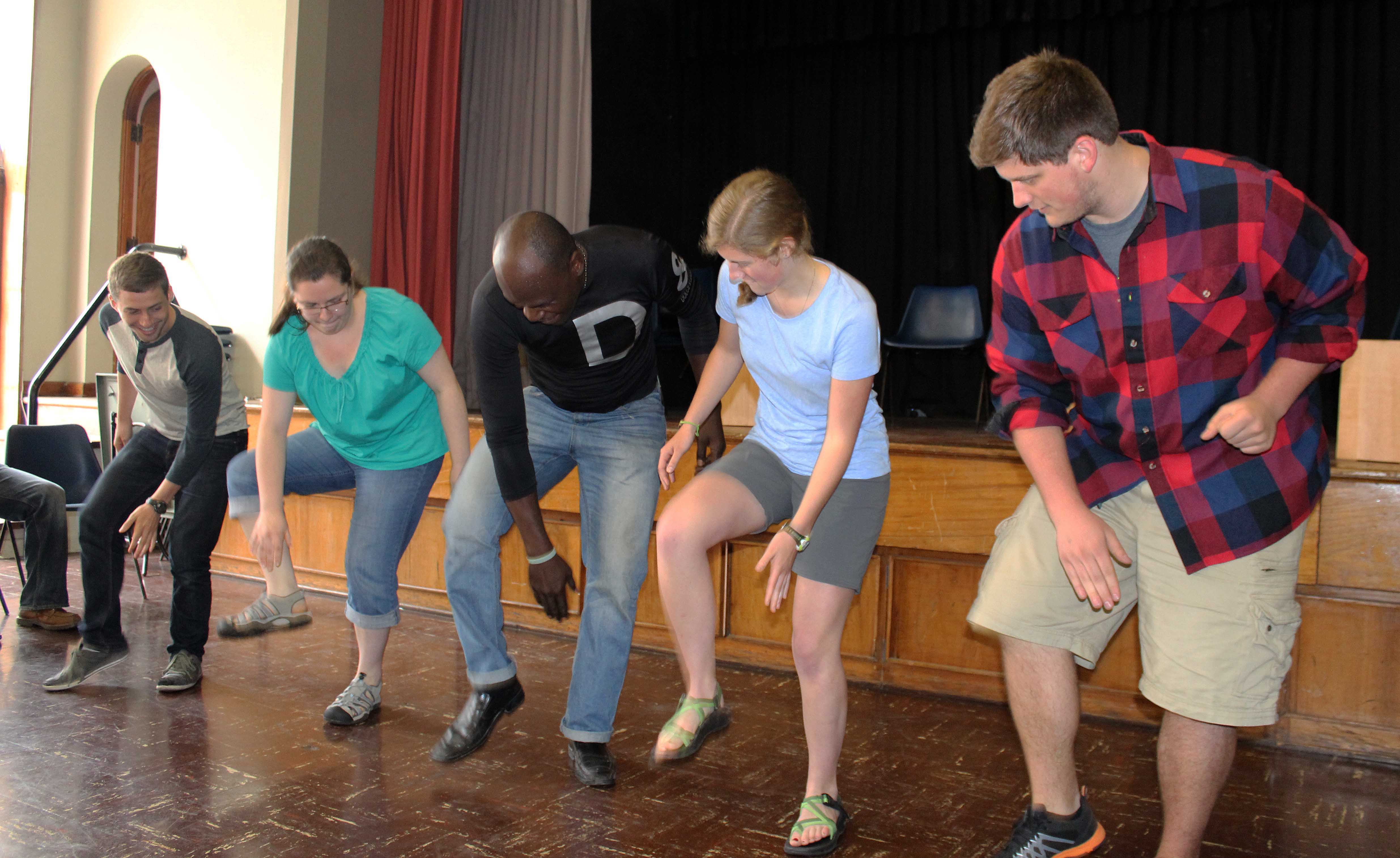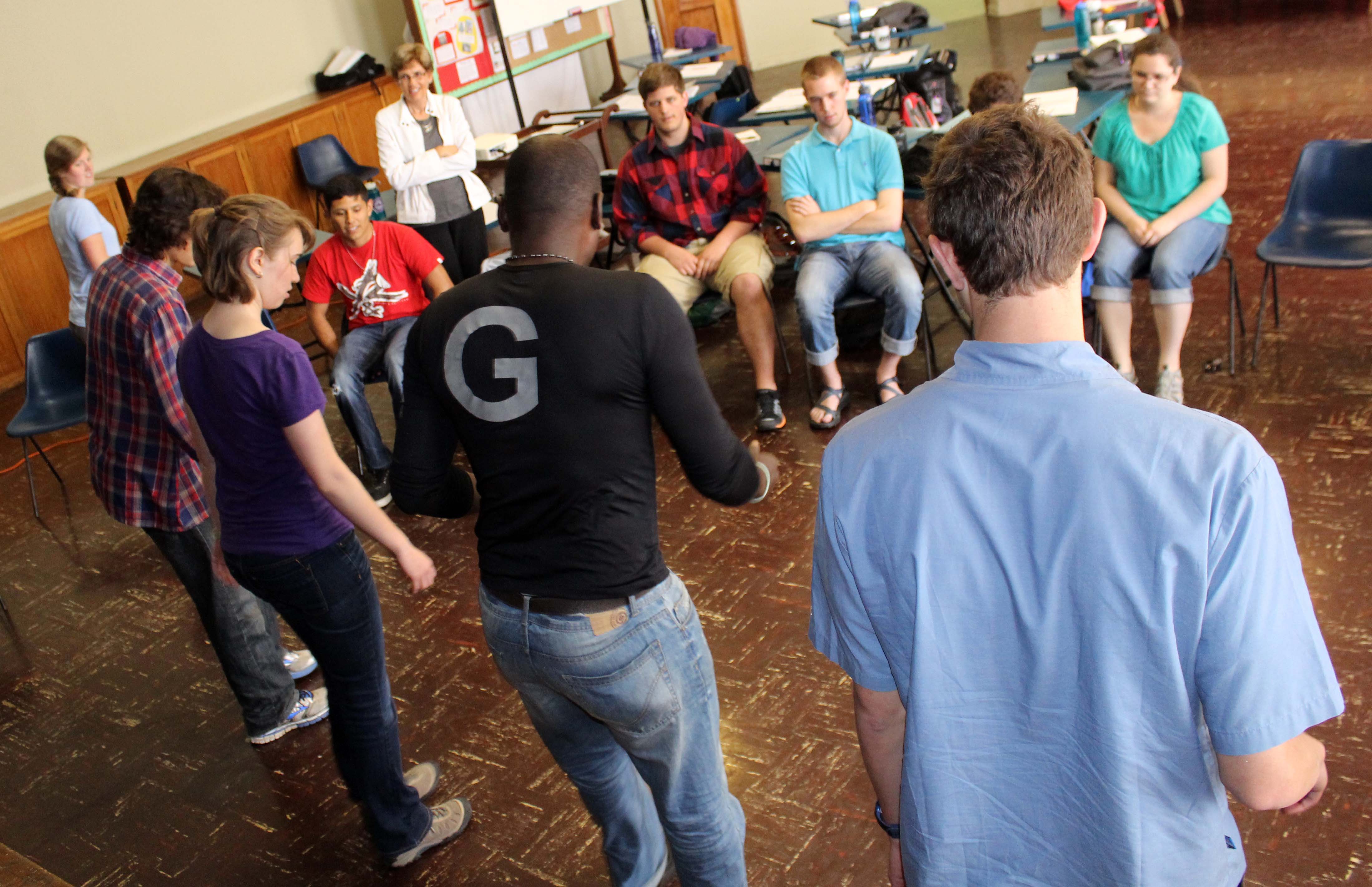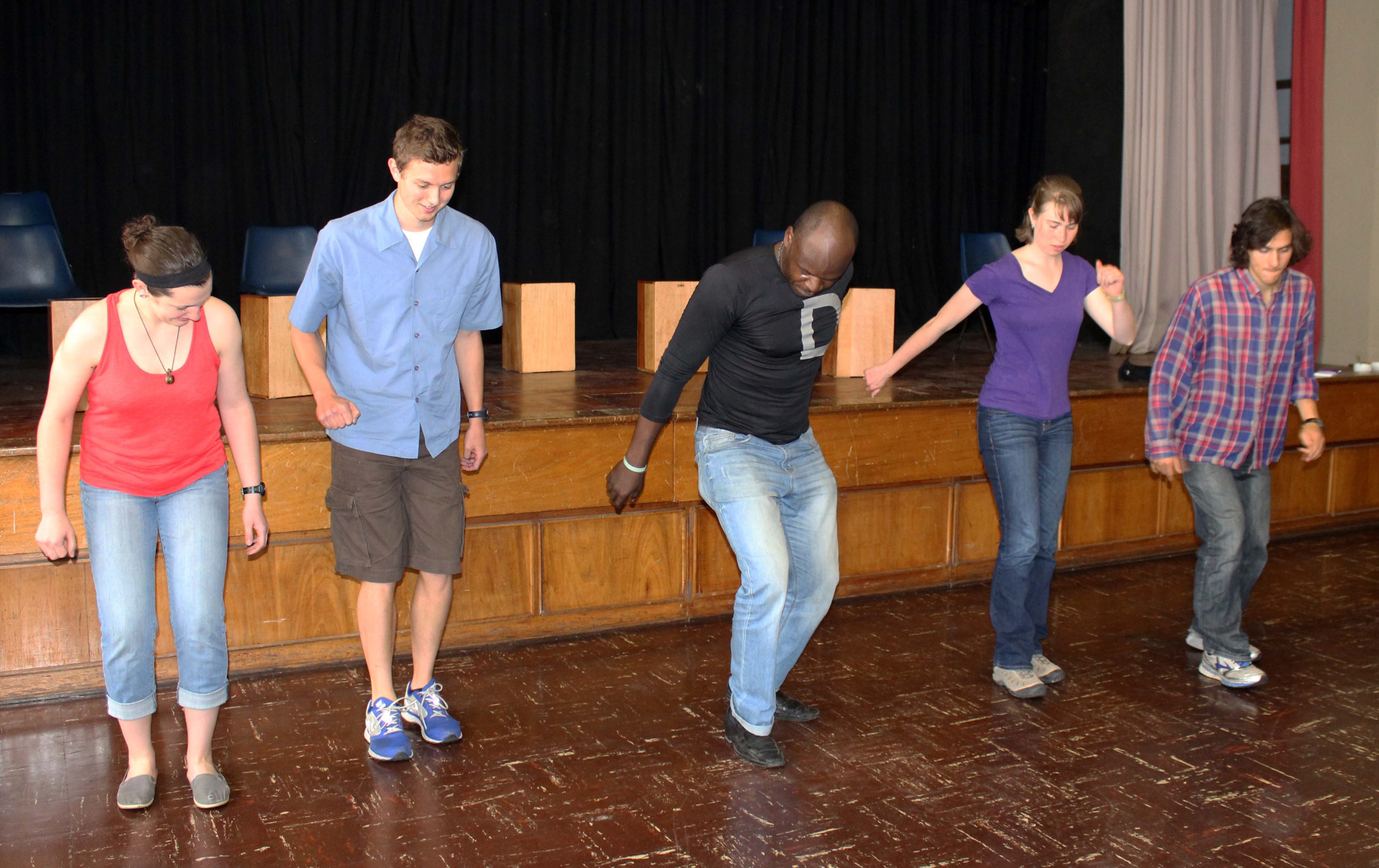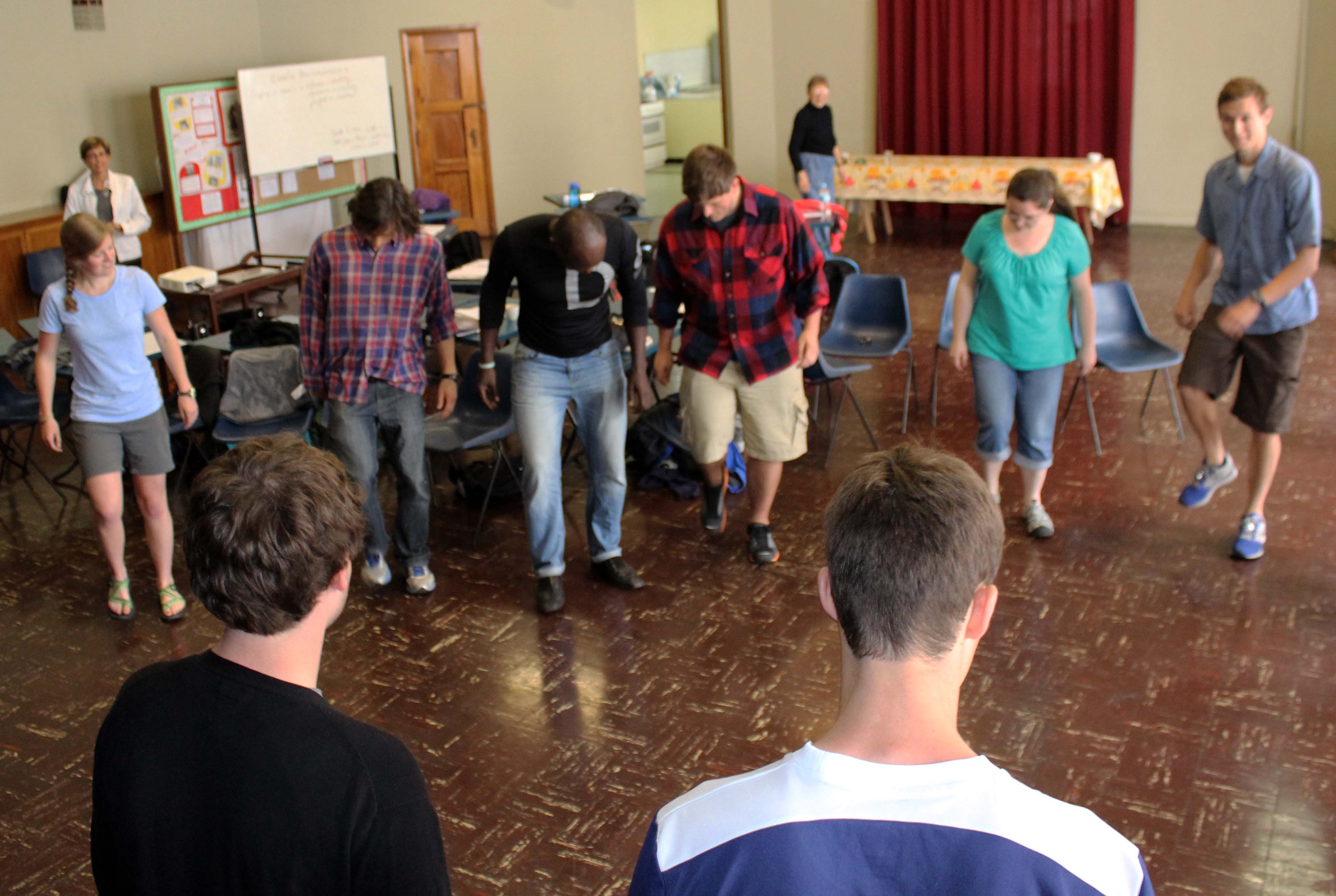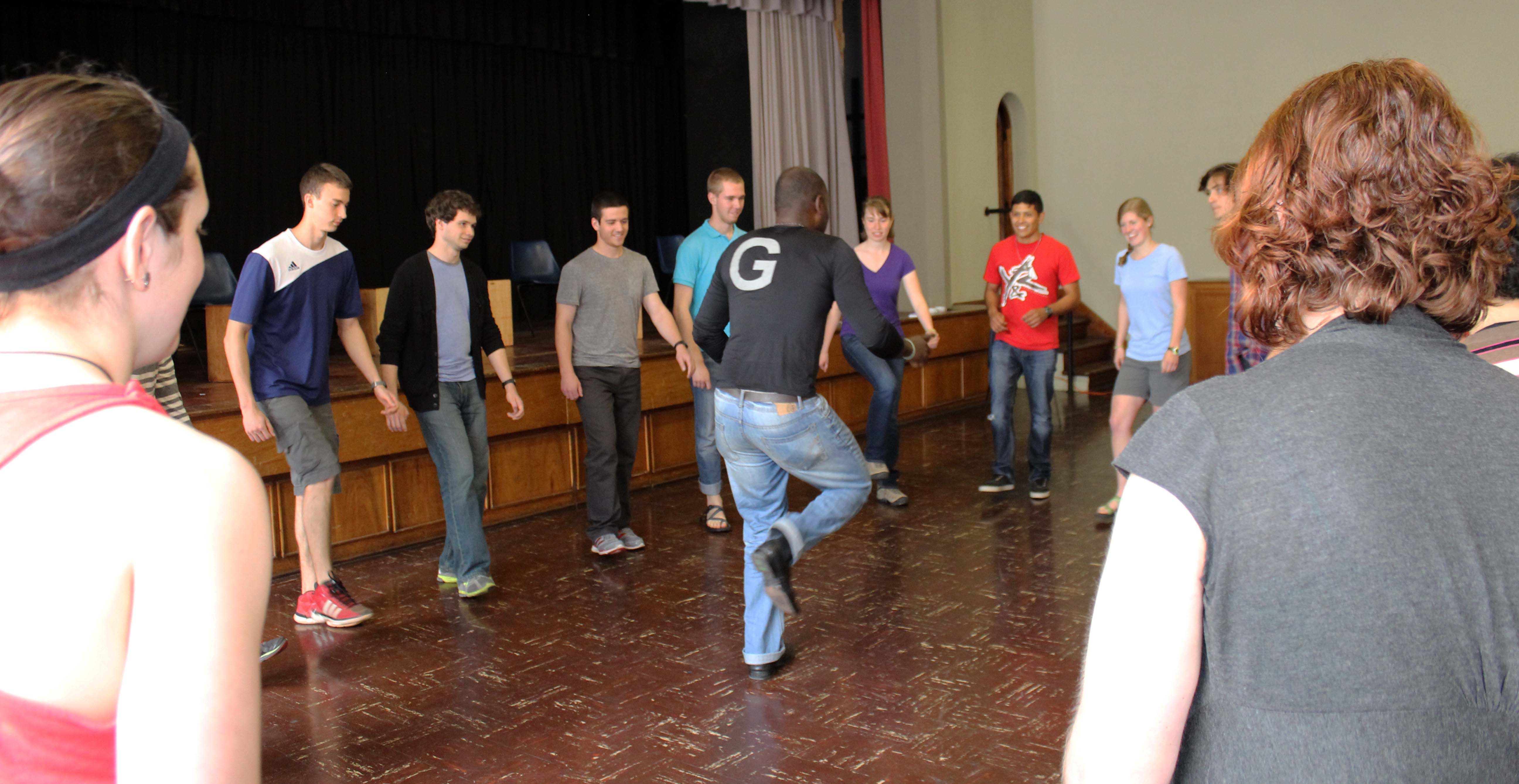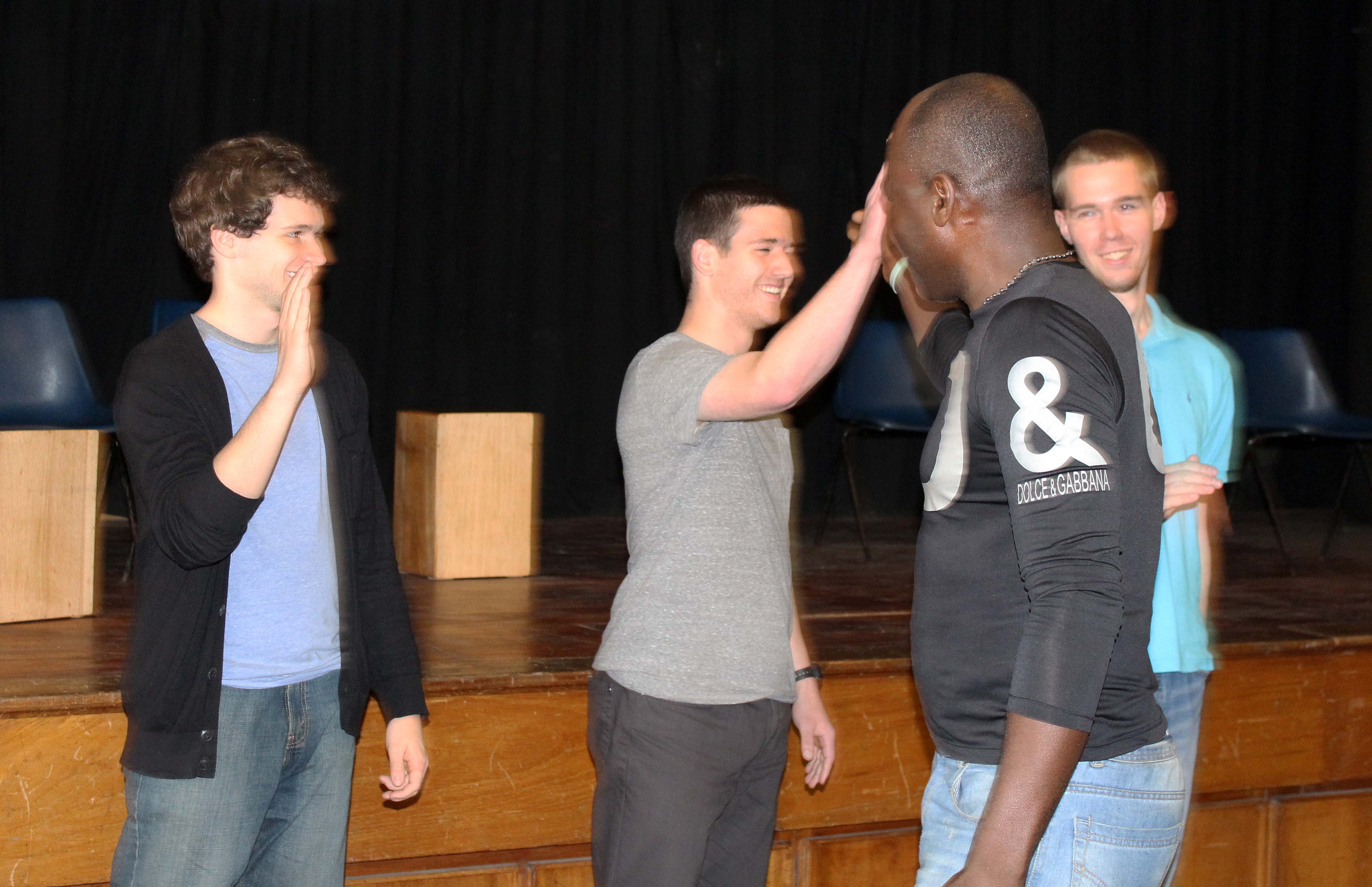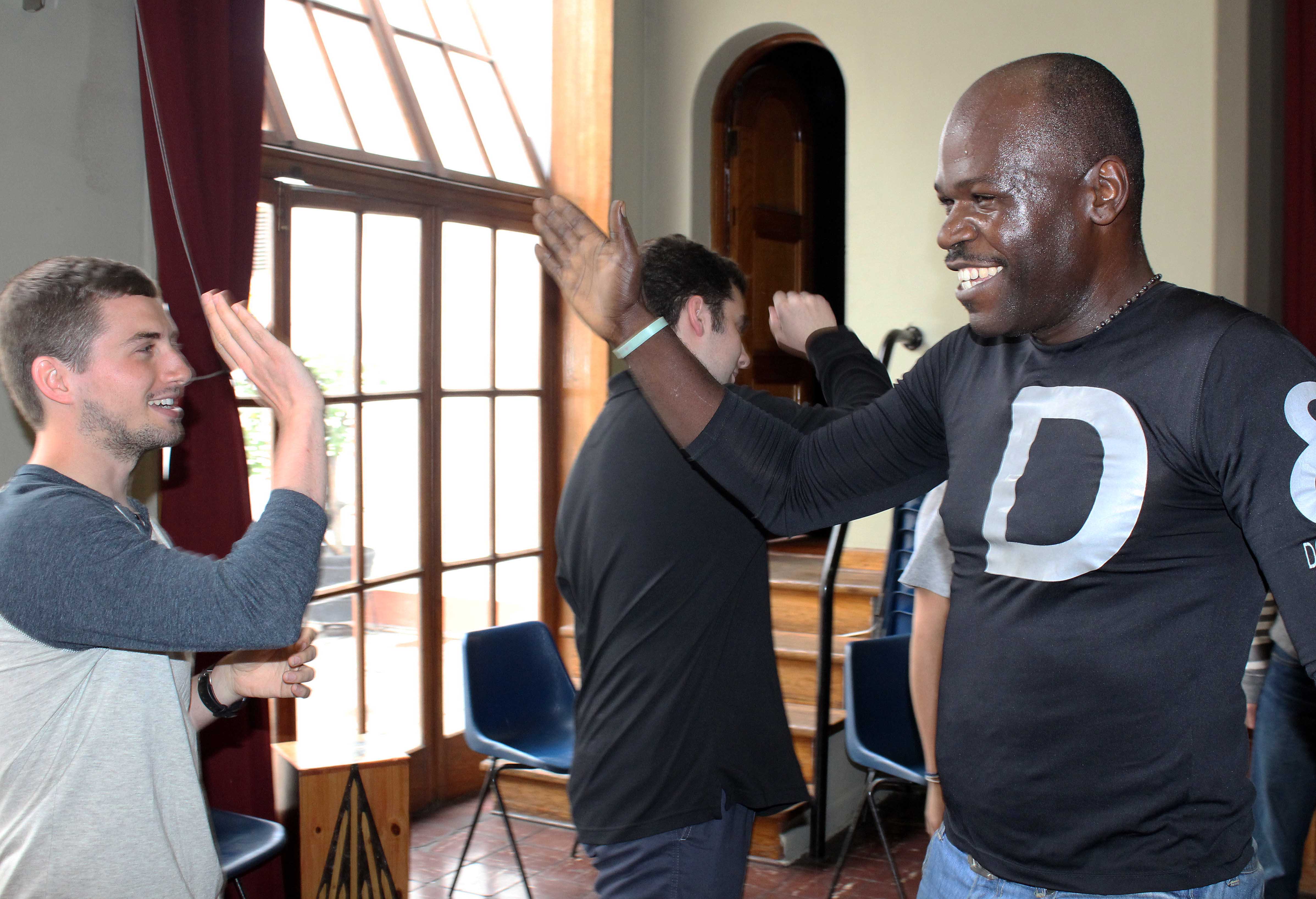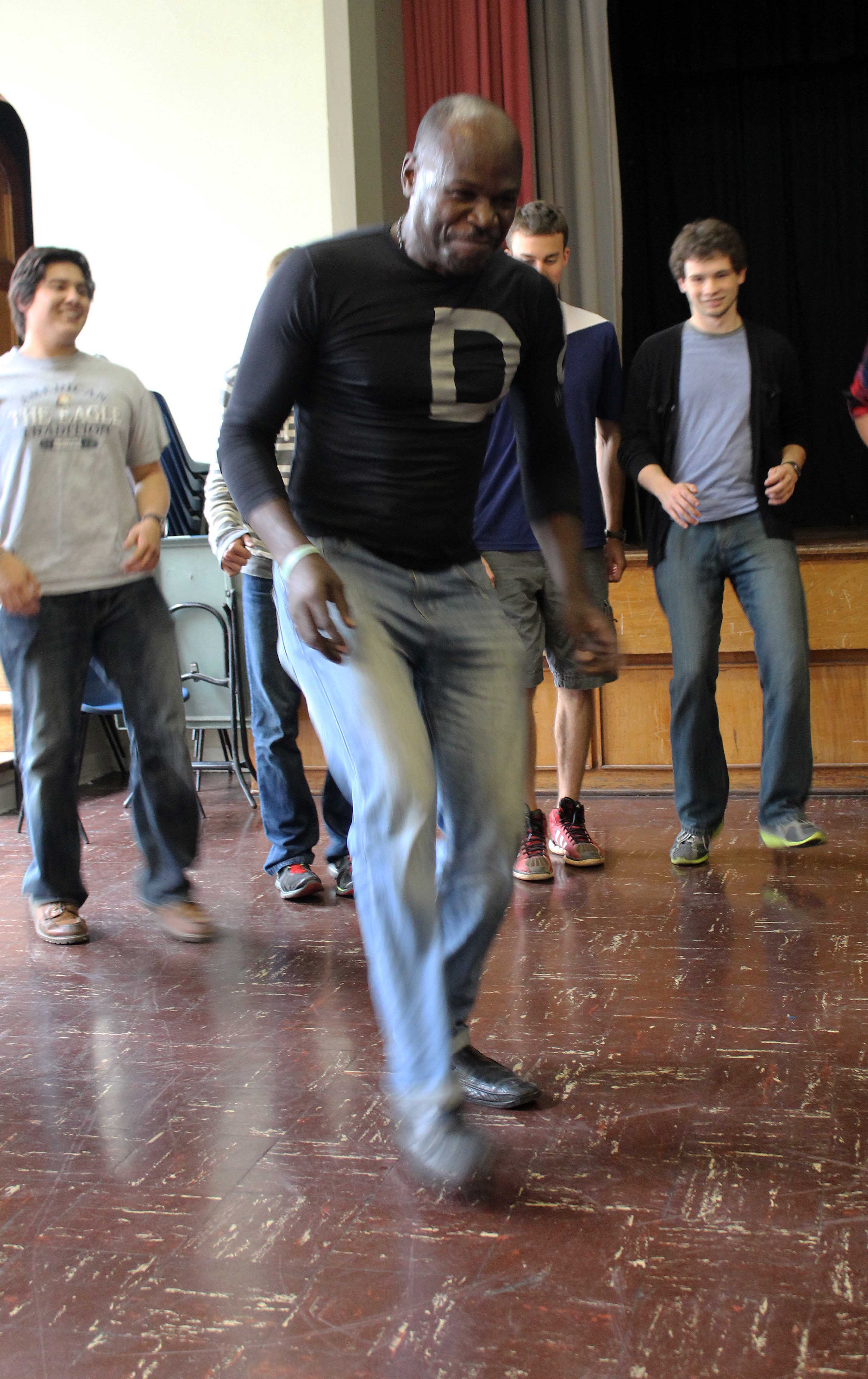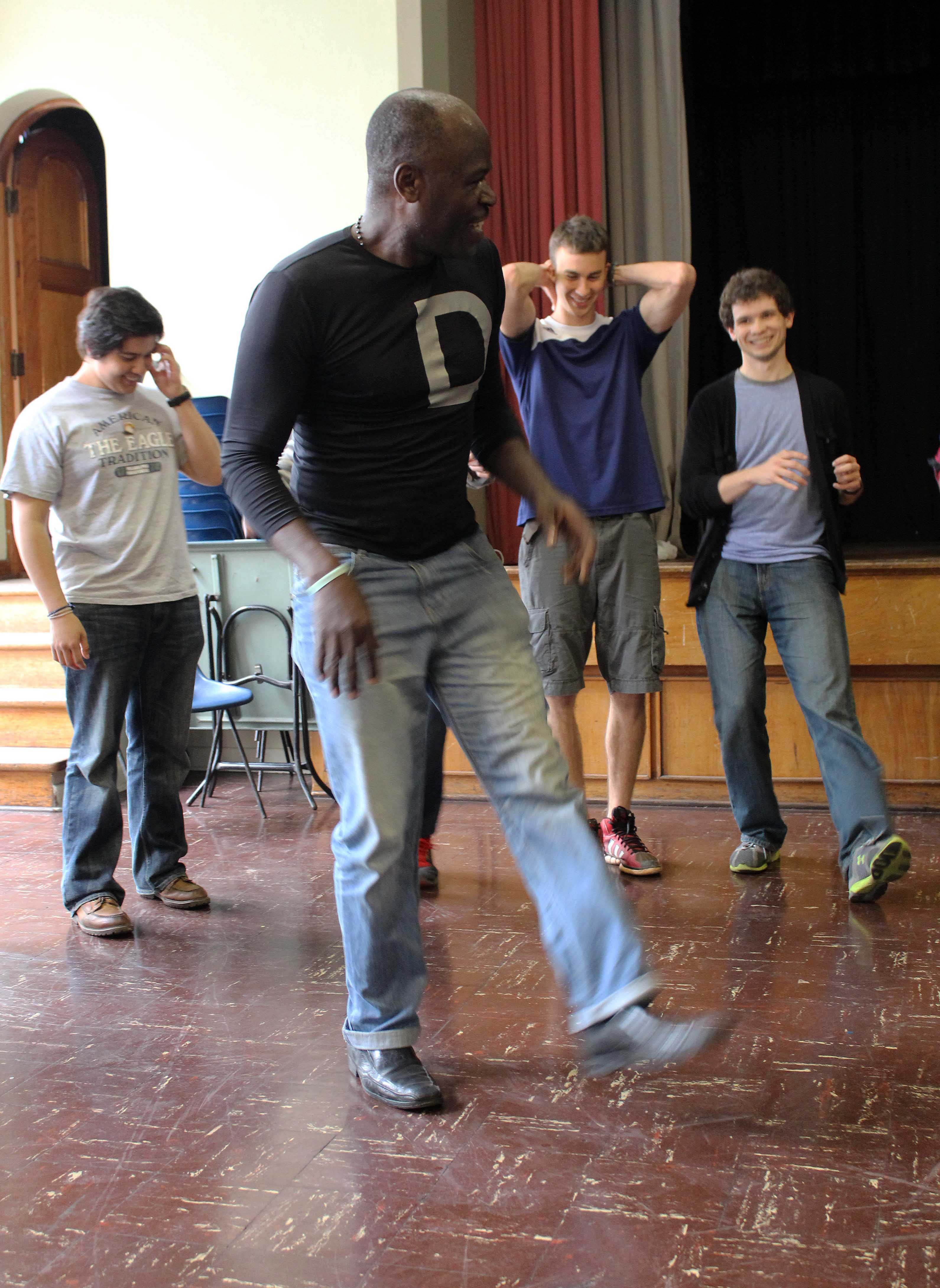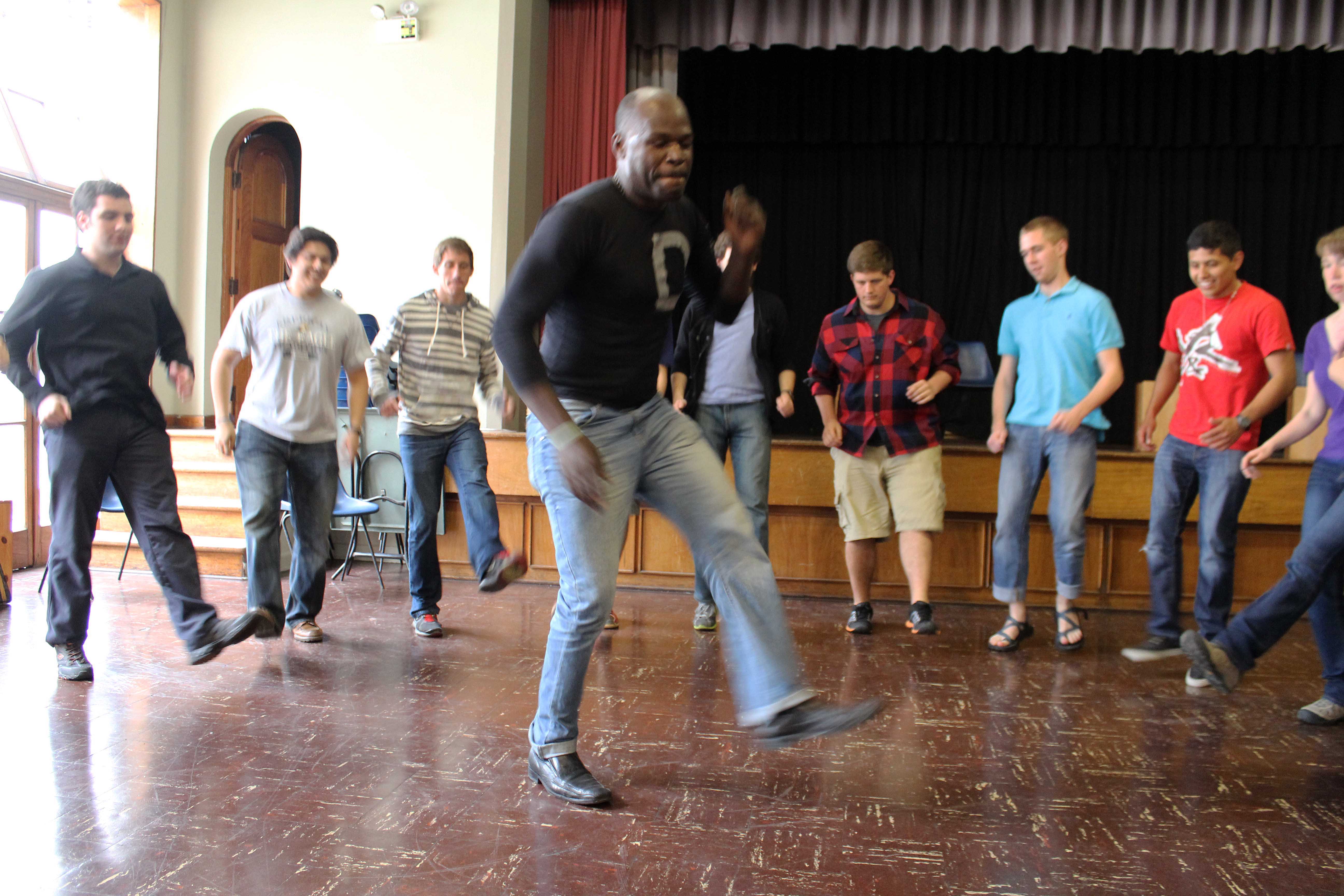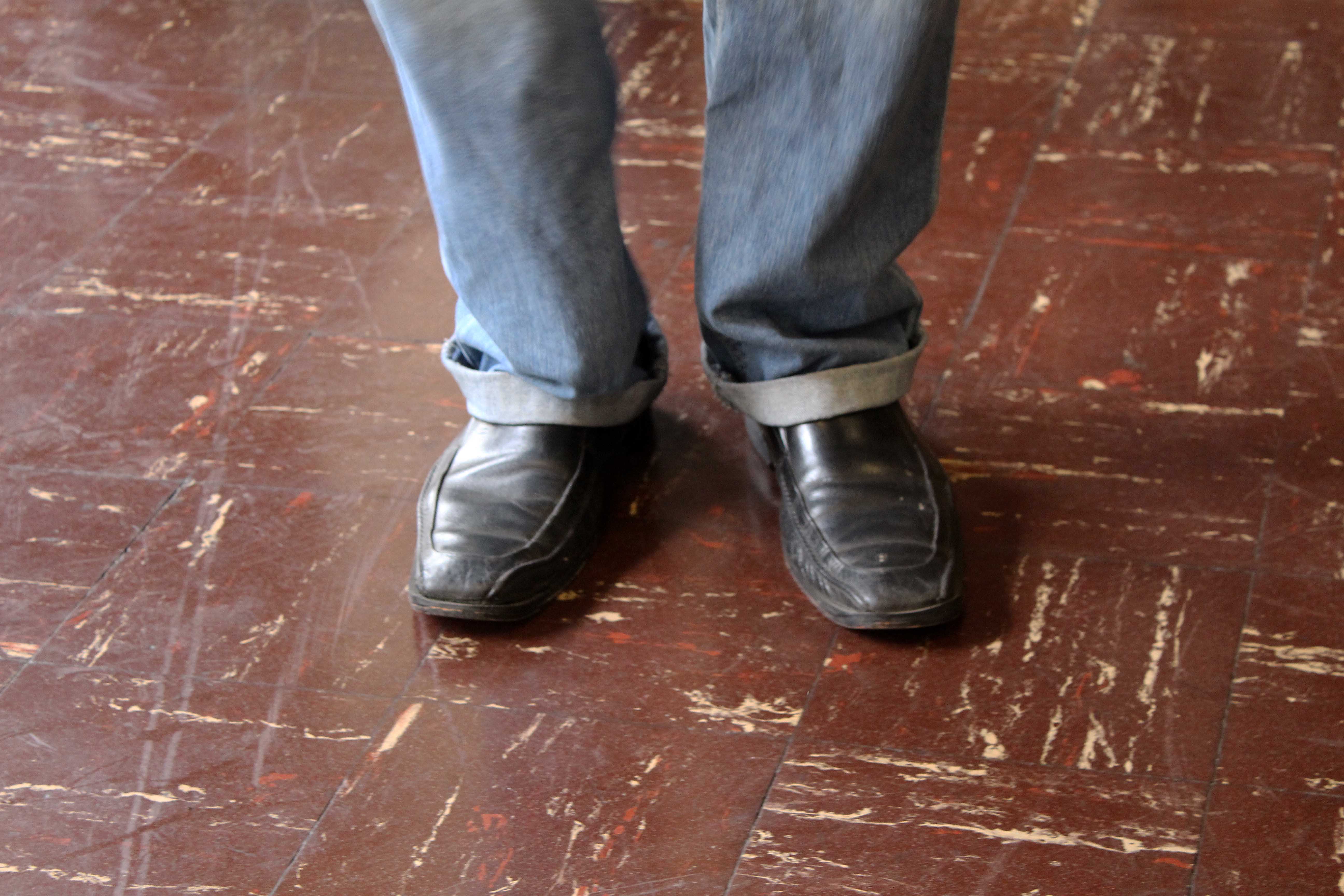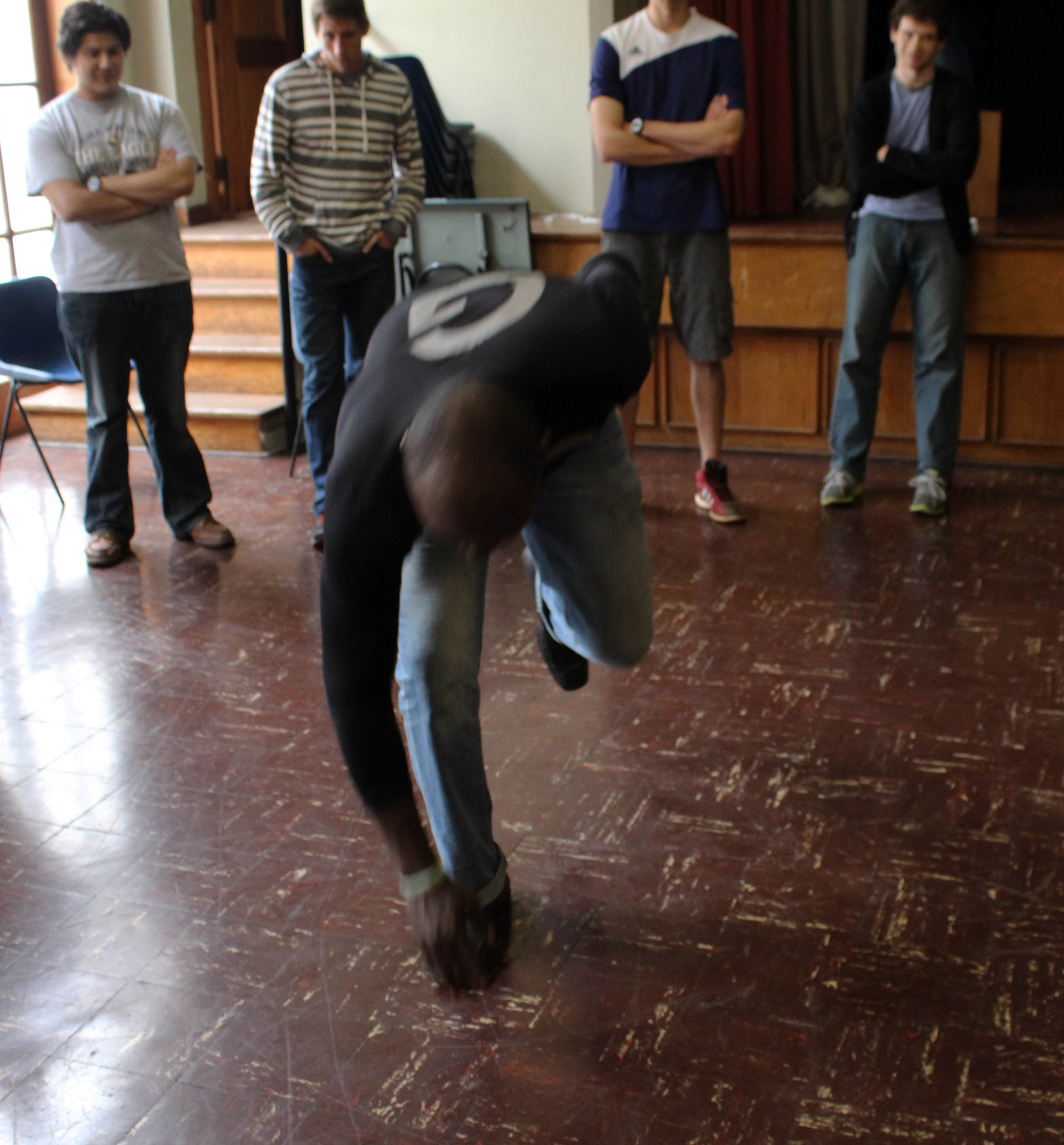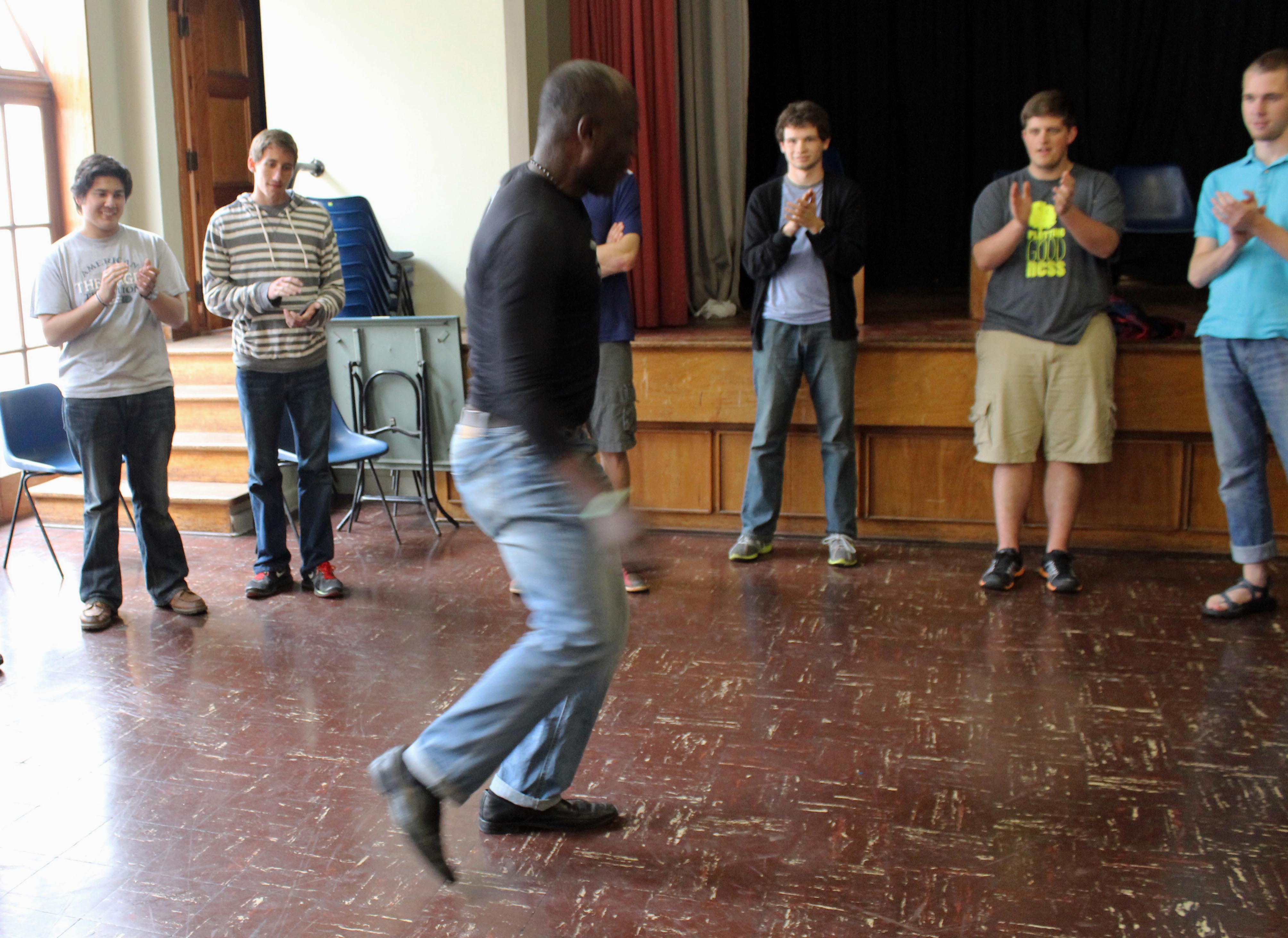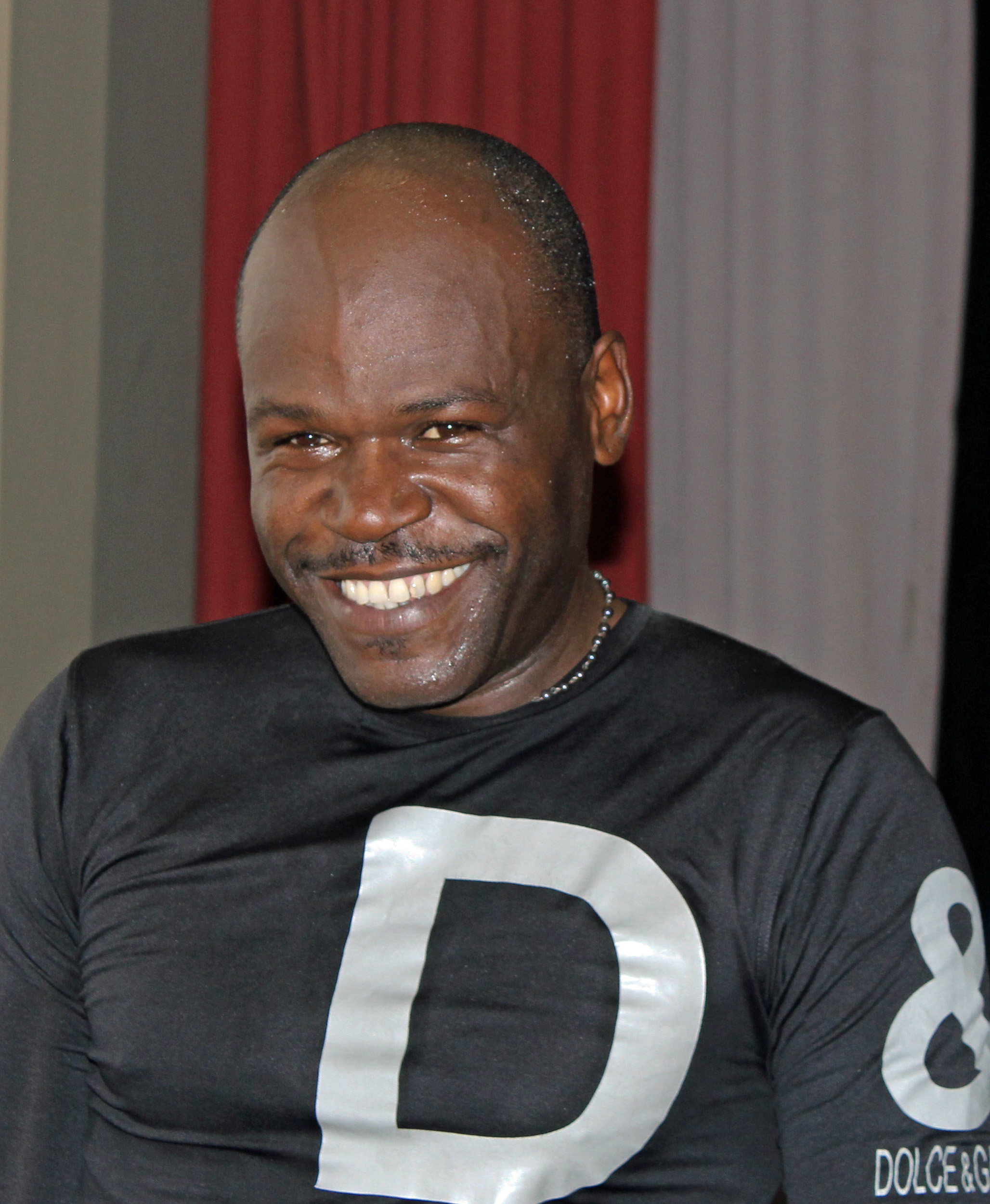Cajón lessons from a master
Goshen College students participated in a truly interactive workshop earlier this month by trying out a versatile musical instrument and a unique form of dance. They also received a brief overview of Afro-Peruvian history, to put the art forms into context. Their teacher was Camilo Ballumbrosio, a phenomenal Afro-Peruvian percussionist known throughout Peru and among world music fans in the Europe and the United States.
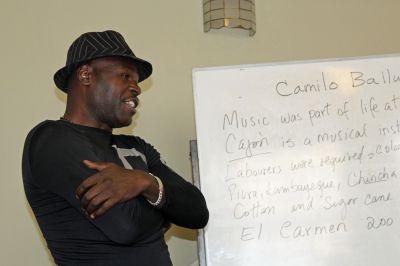
Ballumbrosio’s ancestors were brought to Peru as slaves from Africa to work on cotton and sugar plantations on the Peruvian coast. His family is from El Carmen in the coastal Chincha Province and his father, Amador, was a well-known zapateo (tap) dancer and violinist who taught his children how to dance and make music. He also taught them their history.
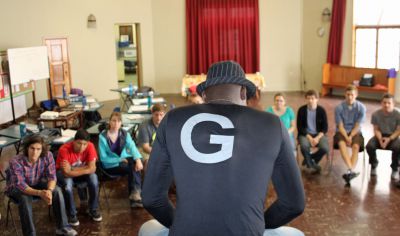
The first slaves arrived in Peru with the Spanish conquistadores. Many more were brought later via the Caribbean or Brazil, according to Peru’s Museo Nacional Afroperuano. The majority of Peru’s slaves lived in Lima and by the 19th century, they formed the heart of Peru’s plantation labor force. Despite opposition from slave owners, José de San Martín – the “liberator of Peru”– ordered the slave trade abolished in 1821. Slavery itself, however, was not finally abolished in Peru until 1854.
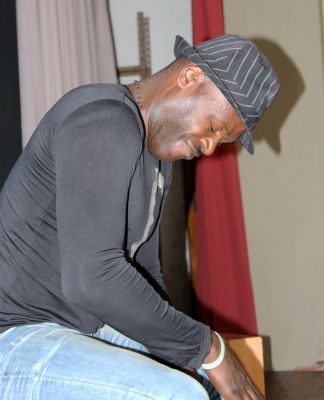
The Ballumbrosio family has brought much positive attention to Afro-Peruvian culture and history in their region on the coast south of Lima. Afro-Peruvian communities can be found all along the Peruvian coast, including in the port area of Callao, near Lima.
About 9 percent of Peru’s population of nearly 30 million claim African heritage and they have contributed a distinct blend of religion, language, cuisine, music and dance to the nation’s cultural heritage. Afro-Peruvian music is heavy on cadences and rhythms originally played on dried squashes and wooden boxes that Peruvian slaves started to use after their masters, and the Catholic Church, banned their traditional drums.
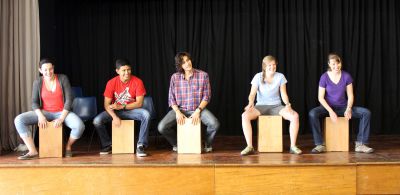
During his workshop in the salon of the Anglican Cathedral of the Good Shepherd (Buen Pastor), Ballumbrosio introduced students to the cajón, a wooden six-sided, box-shaped instrument developed in Peru in the 19th century and played by slapping the front or rear faces (generally thin plywood) with the hands or fingers. Ballumbrosio explained that the cajón is a versatile instrument that today is used worldwide in many musical forms.
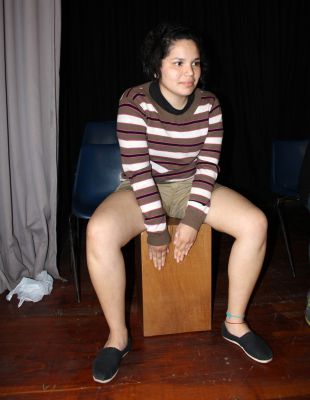
After demonstrating his high-speed playing skills, Ballumbrosio patiently taught students how to replicate complex sequences on the instrument. One by one, the students learned how to create distinct sounds on the cajón by tapping out beats with their fingertips and the palms of their hands.
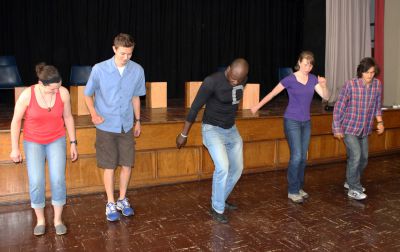
Ballumbrosio also demonstrated a form of tap dancing known as “zapateo,” which originated among Afro-Peruvians in coastal communities. Inspired by African rhythms, zapateo dancers often accompany guitarists or violinists and replicate the rapid beats of the cajón. Zapateo, which dates back to the days Peru was a viceroyalty, requires great coordination, agility and stamina. Although Goshen students managed to replicate a few basic steps, they could only watch in awe as Ballumbrosio put on an amazing demonstration of flexibility, balance, speed and endurance.
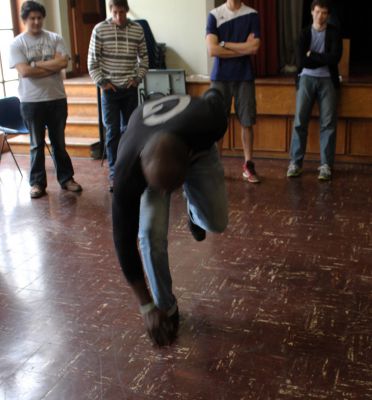
– Written by Judy Weaver
